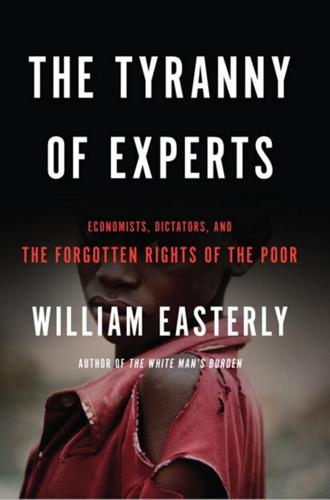
The Tyranny of Experts: Economists, Dictators, and the Forgotten Rights of the Poor
by
William Easterly
Published 4 Mar 2014
World Bank, “Strengthening World Bank Engagement on Governance and Anticorruption,” March 21, 2007, p. 33. http://siteresources.worldbank.org/EXTPUBLICSECTORANDGOVERNANCE/Resources/GACStrategyPaper.pdf, accessed September 6, 2013. CHAPTER 2: TWO NOBEL LAUREATES AND THE DEBATE THEY NEVER HAD 1. Gunnar Myrdal, Development and Under-Development: A Note on the Mechanism of National and International Inequality (Cairo: National Bank of Egypt, 1956), p. 65. 2. Gunnar Myrdal, An International Economy: Problems and Prospects (New York: Harper, 1956), 145. 3. Gunnar Myrdal, Asian Drama: An Inquiry into the Poverty of Nations, 3 vols. (New York: Twentieth Century Fund, 1968), quoted in P. T. Bauer, Dissent on Development: Studies and Debates in Development Economics (Cambridge, MA: Harvard University Press, 1976), 187. 4.
…
Pierson, Ludwig von Mises, Georg Halm, and Enrico Barone (London: Routledge and Kegan Paul, 2011), Kindle edition, locations 152–57. 52. Hayek, Constitution of Liberty, 1980. 53. Hayek, Road to Serfdom, 180. 54. Gunnar Myrdal, Development and Under-Development: A Note on the Mechanism of National and International Inequality (Cairo: National Bank of Egypt, 1956), 63 and 65. 55. Quoted in Bauer, Dissent on Development, 187. 56. Ibid., 206. 57. Ibid., 207. 58. Ibid., 189. 59. Hayek, Road to Serfdom, 2216. 60. Hayek, Constitution of Liberty, 13831. 61. Hayek, Road to Serfdom, Kindle location 4350. 62. Ibid., 4070. 63. Gunnar Myrdal, “The Equality Issue in World Development,” 1974 Nobel Prize Lecture in Economic Sciences, March 17, 1975.
…
This clash drove him to articulate a vision of how individual rights were both an end in themselves and a means by which free individuals in a free society solved many of their own problems. Hayek depicted the solutions, including both private goods and government services, as emerging from competitive economic and political entrepreneurs. Hayek’s fellow Nobel Laureate Gunnar Myrdal had very different views on how societies emerge from poverty into prosperity. The division between them was perhaps most fundamentally expressed by Myrdal’s opposite views on individual rights in development. Throughout his career, Myrdal did not feature an extensive role for individual rights in his writings about how development did or should happen.
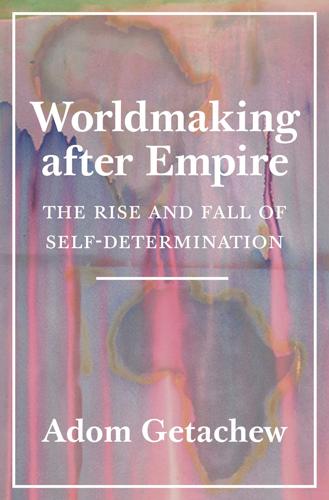
Worldmaking After Empire: The Rise and Fall of Self-Determination
by
Adom Getachew
Published 5 Feb 2019
Manley, Poverty of Nations, 93. 72. Nyerere, “Third World and the International Economic Structure,” 37. 73. Ibid., 37–38. 74. Gunnar Myrdal, An International Economy: Problems and Prospects (New York: Harper and Row, 1956); Gunnar Myrdal, Rich Lands Poor Lands: The Road to World Prosperity (New York: Harper and Row, 1957); Gunnar Myrdal, Beyond the Welfare State: Economic Planning and Its International Implications (New Haven, CT: Yale University Press, 1960). For recent assessments of these texts, see Jamie Martin, “Gunnar Myrdal and the Failed Promises of the Postwar International Economic Settlement,” Humanity: An International Journal of Human Rights, Hu manitarianism, and Development 8 (Spring 2017): 167–73; Samuel Moyn, “Welfare World,” Humanity: An International Journal of Human Rights, Humanitarianism, and Development 8 (Spring 2017): 175–83; Isaac Nakhimovsky, “An International Dilemma: The Postwar Utopianism of Gunnar Myrdal’s Beyond the Welfare State,” Humanity: An International Journal of Human Rights, Humanitarianism, and De velopment 8 (Spring 2017): 185–94. 75.
…
Arthur Lewis, Report on Industrialization and the Gold Coast Economy (Accra: Government Printers, 1953). 23. Tignor, W. Arthur Lewis, 169–76; Ahlman, Living with Nkrumahism, 80–81, 130. 24. Tignor, W. Arthur Lewis, 176. 25. Nkrumah, Africa Must Unite, 97. 26. Ibid., 110; Gunnar Myrdal, Economic Theory and Underdeveloped Regions (London: Gerald Duckworth, 1957), 66. Myrdal’s Economic Theory was based on a series of lectures he had given to the National Bank of Egypt in 1955. The lectures were published as Gunnar Myrdal, Development and Underdevelopment: A Note on the Mechanism of National and International Economic Equality (Cairo: National Bank of Egypt, 1956). 27. Myrdal, Development and Underdevelopment, 42–43; Myrdal, Economic The ory and Underdeveloped Regions, 47–48; “Union Government Is Essential to Economic Independence and Higher Living Standards,” in Files of Ex-Presidential Affairs, Folder RG/17/2/1047 OAU Papers, Public Records and Archives Department. 28.
…
Instead, postcolonial states were subject to the vagaries of the international market in ways that persistently limited postcolonial nation-building. In response to this structural dependence, nationalists envisioned an egalitarian global economy that required the internationalization of welfarism. Drawing on the work of Gunnar Myrdal, I thus characterize the NIEO as a welfare world that would enhance the bargaining the w elfa r e wor ld of the new economic or der [ 145 ] power of postcolonial states, institute international planning and coordination to generate equitable redistribution, and ensure democratic decision-making.

The State and the Stork: The Population Debate and Policy Making in US History
by
Derek S. Hoff
Published 30 May 2012
For this committee, consult Frederick Henry Osborn Papers, American Philosophical Society, Philadelphia (hereafter Osborn Papers), Folder “Council on Population Policy.” 28. Gunnar Myrdal, The Essential Gunnar Myrdal, ed. Örjan Appelqvist and Stellan Andersson (New York: The New Press, 2005), xxii. 276 notes to chapter three 29. Gunnar Myrdal, An American Dilemma: The Negro Problem and Modern Democracy (New York: Harper, 1944). 30. Gunnar Myrdal, Population: A Problem for Democracy (Cambridge, Mass: Harvard University Press, 1940), 130. 31. Ibid., 18. 32. Alva Myrdal, Nation and Family: The Swedish Experiment in Democratic Family and Population Policy (1941; reprint, with a foreword by Daniel Patrick Moynihan and new preface by the author, Cambridge, Mass: MIT Press, 1968), 2. 33.
…
In contrast, nineteenth-century American workers, concerned about the pressure of population growth on wages, erected what has been called a “working-class neo-Malthusianism.”13 And during much of the twentieth century, American liberalism incorporated the position that a smaller population would improve per capita incomes and reduce inequality. The Right has also divided on population matters. “Classical Manchester Liberalism [today’s anti-statist conservative economics] is founded on the Malthusian population doctrine,” observed Nobel laureate economist Gunnar Myrdal.14 Some conservatives have used Malthusian precepts to argue that charity is counterproductive because it merely exacerbates population growth. Meanwhile, the Left has accused conservative supporters of population control of fearing the masses. Business interests, however, often value the cheap labor that they assume follows steady population increase.
…
Also in 1935, the PAA, the American Eugenics Society, and leading birth control organizations joined forces to form the Council on Population Policy, an ad hoc committee that served as a clearinghouse for population information and reform efforts.27 The American campaign to enact population policies was part of a population depressed 81 trans-Atlantic effort to build more robust and pro-family welfare states, a new progressive way of thinking about state policy filtered through the prism of demography. In 1937, the Carnegie Corporation invited the Swedish population experts Alva and Gunnar Myrdal to the United States, primarily to study race relations.28 Gunnar’s famous resultant book, An America Dilemma (1944), helped spur the civil rights movement.29 But he also took the time to write Population: A Problem for Democracy (1940), based on lectures at Harvard. Gunnar, who would eventually win the Nobel Prize in Economics (Alva would win the Nobel Peace Prize) stressed the need to rejuvenate birthrates in the industrialized world, but he welcomed a stable population in the long term.

The Quiet Coup: Neoliberalism and the Looting of America
by
Mehrsa Baradaran
Published 7 May 2024
Even if exploitation wasn’t exactly the correct concept, experts had revealed the distinct patterns of capital extraction that followed racial segregation, which resembled the dynamic of colonization and created a captive economy within a nation. In An American Dilemma, for example, the Swedish economist Gunnar Myrdal demonstrated the self-reinforcing trends that had kept segregated Black areas entrenched in poverty, a phenomenon he labeled a “backwash effect”: a growing, capital-rich white community exerts a “strong, agglomerative pull, accelerating their rate of growth, and bringing increasing stagnation” to the capital-poor, but labor-rich, ghettos.
…
—CARL JUNG, MAN AND HIS SYMBOLS (1964) TO WIN A Nobel Prize is to have reached the pinnacle of one’s profession: to be recognized for making uncommonly significant contributions to society. Usually the winner is thrilled and humbled. Not so with the Economics Nobel in 1974. Instead, its two winners were angry—not because they had to share the prize, but over whom they had to share the prize with. Gunnar Myrdal and Friedrich A. Hayek harbored no personal animosity for each other; Hayek had in fact translated Myrdal’s first book into German. But their worldviews were in direct opposition—condoning one meant condemning the other. And their disagreement was not the typical pettiness of rival scholars, but rather about the future of the world economy.
…
King called the 1964 Civil Rights Act “the child of a storm” and “a component of a world era of change,” and he compared northern ghettos to a “colonial area … powerless because all important decisions affecting the community were made from the outside.”9 Du Bois, who died in 1963, was active in the anticolonial struggle, joining United Nations committees and coordinating declarations of peace and disarmament alongside his old friend Gunnar Myrdal and Myrdal’s wife, Alva, herself a future Nobel laureate. At a 1949 peace conference in Paris, Du Bois lamented that his “own native land built by my father’s toil and blood, the United States” had become “drunk with power … and [was] leading the world to hell in a new colonialism with the same old human slavery which once ruined us; and to a third World War which will ruin the world.”10 Back in the eighteenth century, Thomas Paine’s widely circulated pamphlet Common Sense provocatively denounced the evil myth of monarchy and “hereditary succession,” persuading colonists to challenge the bogus idea that “a race of men came into the world so exalted above the rest” and distinguished themselves like “some new species.”11 The empire had divided the world into “two species,” wrote the Algerian revolutionary Frantz Fanon, the Thomas Paine of the anticolonial struggle, in 1961.12 His polemic The Wretched of the Earth urged the subjugated populations (“the wretched”) to challenge the false racial hierarchy of empire.
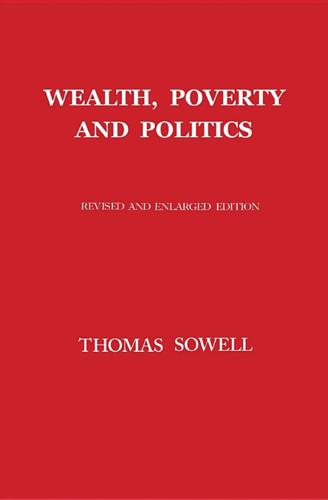
Wealth, Poverty and Politics
by
Thomas Sowell
Published 31 Aug 2015
The principle, but not the phrase, came from William Graham Sumner’s 1906 book Folkways. Decades later, Gunnar Myrdal paraphrased Sumner’s “legislation cannot make mores” as “stateways cannot change folkways.” William Graham Sumner, Folkways: A Study of the Sociological Importance of Usages, Manners, Customs, Mores, and Morals (Boston: Ginn and Company, 1906), p. 77; Shirley Moody-Turner, Black Folklore and the Politics of Racial Representation (Jackson: University Press of Mississippi, 2013), pp. 18, 169 (note 1); Gunnar Myrdal, An American Dilemma: The Negro Problem and Modern Democracy (New York: Harper & Brothers, 1944), p. 1049. 3.
…
Because members of some groups were deemed to be intellectually capable of being no more than the proverbial “hewers of wood and drawers of water,” genetic determinists supported eugenics— a term coined by Francis Galton, who advocated “the gradual extinction of an inferior race.”62 As late as 1944, Gunnar Myrdal, in his landmark study, An American Dilemma, reported hearing “everywhere in contemporary white America” a belief in a “biological ceiling,” indicating that “the mind of the Negro race cannot be improved beyond a given level.” This belief was “phrased as an excuse by the Negro’s friends and as an accusation by his enemies.”63 The eugenics movement spanned the Atlantic.
…
Riley, Please Stop Helping Us: How Liberals Make It Harder for Blacks to Succeed (New York: Encounter Books, 2014), p. 49. 37. Gary B. Cohen, The Politics of Ethnic Survival: Germans in Prague, 1861–1914, second edition (West Lafayette: Purdue University Press, 2006), p. 28. 38. See, for example, Gunnar Myrdal, Asian Drama: An Inquiry Into the Poverty of Nations (New York: Pantheon, 1968), Vol. III, p. 1642; Myron Weiner and Mary Fainsod Katzenstein, India’s Preferential Policies: Migrants, the Middle Classes, and Ethnic Equality (Chicago: University of Chicago Press, 1981), p. 99. 39. Leon Volovici, Nationalist Ideology and Antisemitism, translated by Charles Kormos, p. 60. 40.
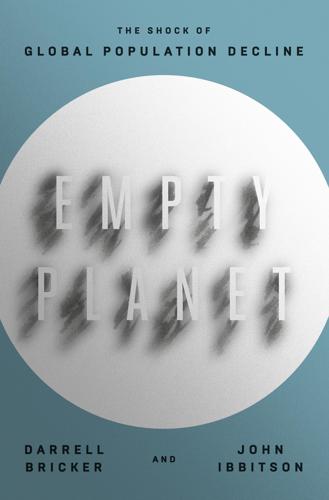
Empty Planet: The Shock of Global Population Decline
by
Darrell Bricker
and
John Ibbitson
Published 5 Feb 2019
BBC News, 7 September 2017. http://www.bbc.com/news/world-europe-41109572 117 Alan Yuhas, “Muslim Population to Reach 10% by 2050, New Forecast Shows,” Guardian, 2 April 2015. https://www.theguardian.com/world/2015/apr/02/muslim-population-growth-christians-religion-pew 118 Patrick Worrall, “Fact Check: Will Britain Have a Muslim Majority by 2015?” Channel 4, 14 June 2013. http://blogs.channel4.com/factcheck /factcheck-will-britain-have-a-muslim-majority-by-2050 119 “Gunnar Myrdal, Analyst of Race Crisis, Dies,” New York Times, 18 May 1987. http://www.nytimes.com/1987/05/18/obituaries/gunnar-myrdal-analyst-of-race-crisis-dies.html?pagewanted=all 120 Mary Johnson, “Alva and Gunnar Myrdal: The Great Happiness of ‘Living to Be Very Old and Together,’” People, 11 August 1980. http://www.people.com/people/archive/article/0,,20077164,00.html 121 Ibid. 122 Stephen Philip Kramer, “Sweden Pushed Gender Equality to Boost Birth Rates,” We News, 26 April 2014. http://womensenews.org/2014/04/sweden-pushed-gender-equality-boost-birth-rates 123 Kajsa Sundström, “Can Governments Influence Population Growth?”
…
Increased child supports, expanded daycare, legislated parental leave—surely there is some suite of incentives that could convince European couples to have the second or third baby. And indeed, some governments have tried. The results are mixed at best. The Swedish economist, sociologist, and politician Gunnar Myrdal was still a student at Stockholm University in the early 1920s, but already conspicuously brilliant and brash. A professor, so the story goes, once warned him to be more respectful to his elders “because it is we who will determine your promotion.” “Yes,” Myrdal replied, “but it is we who will write your obituaries.”119 One night, the railway worker’s son stopped at a farmhouse while on a cycling trip.

Green Tyranny: Exposing the Totalitarian Roots of the Climate Industrial Complex
by
Rupert Darwall
Published 2 Oct 2017
Northern Lights 1Roland Huntford, The New Totalitarians (London, 1971), p. 66. 2Gustaf Arrhenius, Karin Caldwell, and Svante Wold, A Tribute to the Memory of Svante Arrhenius (1859–1927): A scientist Ahead of his Time (Stockholm, 2008), p. 36. 3Maria Björkman and Sven Widmalm “Selling Eugenics: The Case of Sweden,” Notes and Records of the Royal Society, August 18, 2010. 4Paul O’Mahony, “Sweden’s ‘Dark Legacy’ Draws Crowds to Museum,” The Local.se, January 9, 2007, http://www.thelocal.se/20070109/6041. 5Roland Huntford, The New Totalitarians (London, 1971), pp. 9–10. 6Ibid., p. 10. 7Gunnar Broberg and Mattias Tydén, “Eugenics in Sweden: Efficient Care” in Gunnar Broberg and Nils Roll-Hansen, Eugenics and the Welfare State: Sterilization Policy in Denmark, Sweden, Norway, and Finland (East Lansing, 2005), p. 104. 8Stellan Andersson, “On the Value of Personal Archives: Some Examples from the Archives of Alva and Gunnar Myrdal—with a Main Focus on Gunnar,” http://edoc.hu-berlin.de/nordeuropaforum/1999-1/anderssonstellan-15/XML/ (accessed March 3, 2015). 9Gunnar Broberg and Mattias Tydén, “Eugenics in Sweden: Efficient Care” in Gunnar Broberg and Nils Roll-Hansen, Eugenics and the Welfare State: Sterilization Policy in Denmark, Sweden, Norway, and Finland (East Lansing, 2005), p. 97. 10Örjan Appelqvist, The Political Economy of Gunnar Myrdal: Transcending Dilemmas Post-2008 (London and New York, 2013), p. 1. 11Gunnar Myrdal, “Prize Lecture: The Equality Issue in World Development,” March 17, 1975, http://www.nobelprize.org/nobel_prizes/economic-sciences/laureates/1974/myrdal-lecture.html. 12Jay Nordlinger, Peace, They Say; A History of the Nobel Peace Prize, the Most Famous and Controversial Prize in the World (New York and London, 2012), p. 245. 13Gunnar Broberg and Mattias Tydén, “Eugenics in Sweden: Efficient Care” in Gunnar Broberg and Nils Roll-Hansen, Eugenics and the Welfare State: Sterilization Policy in Denmark, Sweden, Norway, and Finland (East Lansing, 2005), p. 105. 14Roland Huntford, The New Totalitarians (London, 1971), pp. 62–63. 15Gunnar Broberg and Mattias Tydén, “Eugenics in Sweden: Efficient Care” in Gunnar Broberg and Nils Roll-Hansen, Eugenics and the Welfare State: Sterilization Policy in Denmark, Sweden, Norway, and Finland (East Lansing, 2005), pp. 114–115. 16Ibid., p. 115. 17Ibid., p. 107. 18Ibid., p. 108. 19Gunnar Broberg and Nils Roll-Hansen, Eugenics and the Welfare State: Sterilization Policy in Denmark, Sweden, Norway, and Finland (East Lansing, 2005), pp. ix and xi. 20Ibid., p. 122. 21Joachim Israel, “An Excerpt from Ett upproriskt liv (A rebellious life) in Peter Stenberg (Ed.)
…
At the beginning of the twentieth century, the average Swedish family had four children, falling sharply in the next two decades. By 1934, Sweden had the lowest birth rate in the world.7 The same year, the leading architects of the Swedish welfare state, the husband and wife partnership of Gunnar and Alva Myrdal, wrote down their thoughts on the subject. “Population is the connecting subject,” Alva recalled, but from that point of view we deal with all social problems: from housing to individual qualities, sterilization, abortion, “the family in the world,” nursery schools, equal wages, school feeding, socialization of medicine, Malthus, the eighties, individualism etc. etc. . . .
…
As distinct from the early eugenicists, they saw population less in biological terms than as a “mathematical or physical quantity.”9 Despite Alva’s expectation about the book creating enemies, the Myrdals reduced their number by deleting sections on eugenics from the English edition, while copies of the Swedish first edition became something of a collector’s item. This helped remove a potential obstacle to the Myrdals’ stellar postwar reputation, especially in the United States. “Gunnar Myrdal taught me more about economics than anyone else in his generation,” J. K. Galbraith wrote in 2005. “He is more relevant now than ever.”10 In 1974, Gunnar was awarded a Nobel Prize in economics. Showing a rare flash of humor, the Nobel committee made him share it with Friedrich von Hayek. Gunnar repaid the compliment in his prize lecture, which barely touched on economics as conventionally understood but showed why he was a darling of the American left.
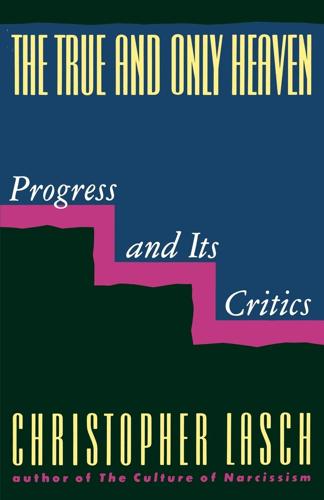
The True and Only Heaven: Progress and Its Critics
by
Christopher Lasch
Published 16 Sep 1991
Kearny's rather humdrum study, Thurman Arnold, Social Critic (1970); and by Ellis Hawley, The New Deal and the Problem of Monopoly (1966), which describes Arnold's antitrust campaign and some of the reasons for its failure. The extensive body of commentary on Gunnar Myrdal, An American Dilemma (1944), attests to the book's status both as a sociological classic and as a reference point in the civil rights movement. David Southern, Gunnar Myrdal and Black‐ White Relations (1987), provides a useful introduction to this commentary. Among the early reviews that helped to establish Myrdal's study as definitive, see, in particular, the ones by Robert S. Lynd, Saturday Review of Literature, 22 April 1944, 5ff.; E.
…
THE POLITICS OF THE CIVILIZED MINORITY Liberal Perceptions of the Public after World War I 412 America the Unbeautiful 416 Social Criticism, Disembodied and Connected 421 Sociology as Social Criticism: The Apotheosis of the Expert 424 Experts and Orators: Thurman Arnold's "Anthropological" Satire 429 The "Machiavelli" of the Managerial Revolution 435 From Satire to Social Pathology: Gunnar Myrdal on the "American Dilemma " 439 The Discovery of the Authoritarian Personality 445 Politics as Therapy 450 The Liberal Critique of Populism 455 Populism as Working-Class Authoritarianism 460 -11- Educated Insularity 465 Camelot after Kennedy: Oswald as Everyman 468 ii.
…
In spite of his early years in Wyoming, the spectacle of Thurman Arnold as a champion of the small producer was inherently unconvincing. His accent—the characteristic accent of the New Deal, of genial contempt, sophisticated raillery, and hard-boiled humanitarianism—gave him away as a charter member of the civilized minority. From Satire to Social Pathology: Gunnar Myrdal on the "American Dilemma" Poor Arnold! If the public could not take him seriously as a populist and trustbuster, the new class could not take him seriously as a social scientist. His books were far too lively, his manner too breezy and irreverent, his footnotes too few and far between. Satire, it turned out, was not to be the approved form of managerial speech.
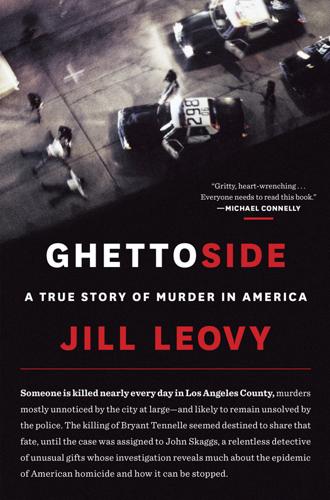
Ghettoside: A True Story of Murder in America
by
Jill Leovy
Published 27 Jan 2015
Wilkerson said about half were gang-related Molotov cocktail cases—“message-sending” arsons, he called them, aimed at intimidating people, and very difficult to solve. “No one wants to talk,” he said. 16 When the Swedish social scientist Gunnar Myrdal He further concluded that “leniency toward Negro defendants in crimes involving other Negroes is actually a form of discrimination.” Gunnar Myrdal, An American Dilemma: The Negro Problem and Modern Democracy (New York: Harper and Row, 1944; 1962 reprint), pp. 542, 551. 17 “the principal injury suffered by African-Americans” Kennedy, Race, Crime and the Law, p. 19.
…
“Take care of business!” He obeyed, and days later killed the victor. Black residents in the area had long complained not just of mistreatment by police, but also that the cops did little to catch the killers and violent assailants in their midst. It was a historic grievance. When the Swedish social scientist Gunnar Myrdal studied the black South in the 1940s, he found that, despite rampant complaints about law enforcement, black Southerners everywhere also said they wanted more policing—to protect them from other black people. South Bureau officers heard some version of the lament several times a day: “It ain’t like I’m out here doin’ something.
…
Gardner, Deep South: A Social Anthropological Study of Caste and Class (Chicago: University of Chicago Press, 1941; reprint University of South Carolina Press, 2009), p. 241. 22 They enlisted blacks as spies Mention of spies and informants crops up in many accounts of the Jim Crow south—for example, Powdermaker’s description of a “mulatto man who acts as a ‘go-between’ for the white and colored people and who is something of a spy, with an unsavory reputation” (Powdermaker, After Freedom, p. 184), and also Gunnar Myrdal’s mention of the use of black “informers, spotters, and stool pigeons” by police (Myrdal, An American Dilemma, p. 541). But one of the most vivid examples was offered to this writer by Ray Knox, a retired L.A. County Youth Authority counselor born in 1951, who is black and was a frequent childhood visitor to his family’s native McComb, Mississippi.
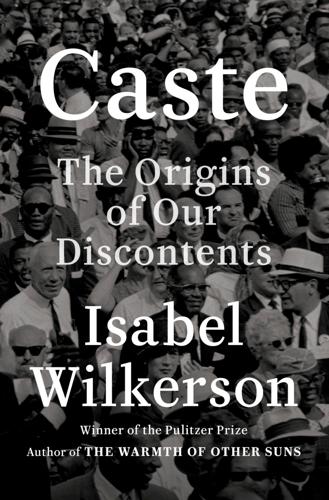
Caste: The Origins of Our Discontents
by
Isabel Wilkerson
Published 14 Sep 2020
The caste system, and the attempts to defend, uphold, or abolish the hierarchy, underlay the American Civil War and the civil rights movement a century later and pervade the politics of twenty-first-century America. Just as DNA is the code of instructions for cell development, caste is the operating system for economic, political, and social interaction in the United States from the time of its gestation. In 1944, the Swedish social economist Gunnar Myrdal and a team of the most talented researchers in the country produced a 2,800-page, two-volume work that is still considered perhaps the most comprehensive study of race in America, An American Dilemma. Myrdal’s investigation into race led him to the realization that the most accurate term to describe the workings of American society was not race, but caste, that perhaps it was the only term that addresses what seemed a stubbornly fixed ranking of human value.
…
By the middle of the twentieth century, the white working-class American, wrote the white southern author Lillian Smith, “has not only been neglected and exploited, he has been fed little except the scraps of ‘skin color’ and ‘white supremacy’ as spiritual nourishment.” Working-class whites, the preeminent social economist Gunnar Myrdal wrote, “need the demarcations of caste more than upper class whites. They are the people likely to stress aggressively that no Negro can ever attain the status of even the lowest white.” In a psychic way, the people dying of despair could be said to be dying of the end of an illusion, an awakening to the holes in an article of faith that an inherited, unspoken superiority, a natural deservedness over subordinated castes, would assure their place in the hierarchy.
…
People drove in from neighboring states, schools let out early so that white children could join their parents to watch men in the dominant caste perform acts of sadism on people from the subordinate caste before hanging them from the limb of a sycamore. Lynchings almost always occurred “at the hands of persons unknown,” performed “in a collective way so that no one person could be blamed.” “Whites were unified in seeing the Negro as a scapegoat and proper object for exploitation and hatred,” wrote Gunnar Myrdal, a leading social economist in the 1940s. “White solidarity is upheld and the caste order protected.” As scapegoats, they are seen as the reason for societal ills. The scapegoats are blamed for a crime rate that they alone do not cause and for drugs that they are no more likely to use than the dominant caste, but for which they are incarcerated at six times the rate as whites accused of similar offenses.
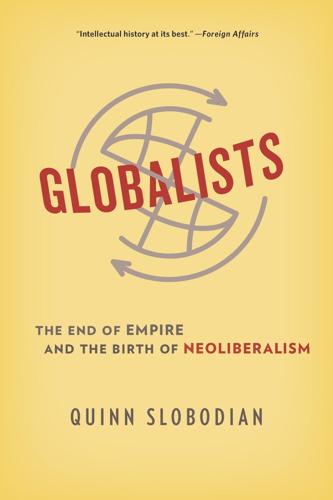
Globalists
by
Quinn Slobodian
Published 16 Mar 2018
By this he meant the universal male suffrage in industrialized nations that brought “the people and their passions, the interest groups and chaotic powers of the masses” into politics.16 The post-1945 era spread what Wilhelm Röpke called the “rabies democratica” globally.17 As the first colonies gained independence from their imperial masters, the international institutions, and the United Nations in particular, became spaces for political claims-making.18 As one-person-one-vote became one-country-one-vote, Global South nations found spokespeople among the very social democratic economists that the neoliberals had clashed with in the 1930s. Liberals like Haberler and Alexander Loveday had set the tone at the early League of Nations, but it was social democrats like the Swedish Gunnar Myrdal and the Hungarians Nicholas Kaldor and Thomas Balogh who dominated the young UN. The new language of “development” and the subfield of “development economics” helped legitimize worldwide demands for full employment, capital controls, and the right to nationalize foreign-owned assets and resources.
…
Extending Röpke’s metaphor, one could say that the vines of the state were creeping outward through an expanding foreign aid program of government loans, which had drawn in the West German partner by 1960, and the more aggressive use of trade unions, including the establishment of the American Institute of Free Labor Development as part of Kennedy’s Alliance for Progress. Röpke called foreign aid “the great action by which the ideas and methods of collectivist policy are carried into the world economy” and singled out economist Gunnar Myrdal as proposing the “transposition” of the modern welfare state from the Western to what Röpke called the “undeveloped” world (consciously avoiding the normative term “underdeveloped”).78 In his article, Röpke attacked by name two authors of the Keynesian growth model and modernization theory, John Kenneth Galbraith and Walt Whitman Rostow, maintaining that the latter preached a “new version of the Rooseveltian illusionism in the dress of economic determinism … which is not nearly as far removed from that of Marx as Prof.
…
They could thereby continue to subsidize their own production while also granting better market access to the products of developing nations. The colonial association clauses in the Rome treaty “had breached the wall” of postwar liberal norms, as one scholar put it, and the wave of preferences that followed veered from the GATT credo of nondiscrimination.208 The result was what Gunnar Myrdal called (approvingly) a “double standard of morality in international trade”—an expectation of reciprocity between industrialized nations and “special and differential treatment” between North and South. African nations renewed their association with the EEC after the wave of decolonization in the Yaoundé Agreement of 1963, signed symbolically in Cameroon to reflect the new balance of power; they did so again with Yaoundé II in 1969.209 The agreement on a Generalized System of Preferences for developing nations in 1968 was another turning point as the United States followed the model of nonreciprocity pioneered by the EEC.210 To neoliberals, it was the historically inflected model of Eurafrica, not the spaceless world of Haberler’s League of Nations imaginary, that became the template for the 1960s.
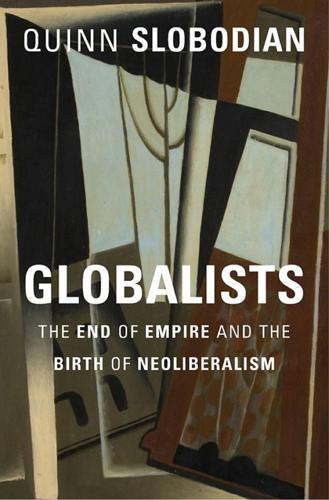
Globalists: The End of Empire and the Birth of Neoliberalism
by
Quinn Slobodian
Published 16 Mar 2018
By this he meant the universal male suffrage in industrialized nations that brought “the p eople and their passions, the interest groups and chaotic powers of the masses” into politics.16 The post-1945 era spread what Wilhelm Röpke called the “rabies democratica” globally.17 As the first colonies gained independence from their imperial masters, the international institutions, and the United Nations in particular, became spaces for political claims-making.18 As one- person-one-vote became one-country-one-vote, Global South nations found spokespeople among the very social democratic economists that the neoliberals had clashed with in the 1930s. Liberals like Haberler and Alexander Loveday had set the tone at the early League of Nations, but it was social democrats like the Swedish Gunnar Myrdal and the Hungarians Nicholas Kaldor and Thomas Balogh who dominated the young UN. The new language of “development” and the subfield of “development economics” helped legitimize worldwide demands for full employment, capital controls, and the right to nationalize foreign-owned assets and resources.
…
Extending Röpke’s metaphor, one could say that the vines of the state were creeping outward through an expanding foreign aid program of government loans, which had drawn in the West German partner by 1960, and the more aggressive use of trade u nions, including the establishment of the American Institute of F ree Labor Development as part of Kennedy’s Alliance for Progress. Röpke called foreign aid “the great action by which the ideas and methods of collectivist policy are carried into the world economy” and singled out economist Gunnar Myrdal as proposing the “transposition” of the modern welfare state from the Western to what Röpke called the “undeveloped” world (consciously avoiding the normative term “underdeveloped”).78 In his article, Röpke attacked by name two authors of the Keynesian growth model and modernization theory, John Kenneth Galbraith and Walt Whitman Rostow, maintaining that the latter preached a “new version of the Rooseveltian illusionism in the dress of economic determinism . . . which is not nearly as far removed from that of Marx as Prof.
…
They could thereby continue to subsidize their own production while also granting better market access to the products of developing nations. The colonial association clauses in the Rome treaty “had breached the wall” of postwar liberal norms, as one scholar put it, and the wave of preferences that followed veered from the GATT credo of nondiscrimination.208 The result was what Gunnar Myrdal called (approvingly) a “double standard of morality in international trade”—an expectation of reciprocity between industrialized nations and “special and differential treatment” between North and South. African nations renewed their association with the EEC a fter the wave of decolonization in the Yaoundé Agreement of 1963, signed symbolically in Cameroon to reflect the new balance of power; 216 GLOBALISTS they did so again with Yaoundé II in 1969.209 The agreement on a Generalized System of Preferences for developing nations in 1968 was another turning point as the United States followed the model of nonreciprocity pioneered by the EEC.210 To neoliberals, it was the historically inflected model of Eurafrica, not the spaceless world of Haberler’s League of Nations imaginary, that became the template for the 1960s.

The Color of Money: Black Banks and the Racial Wealth Gap
by
Mehrsa Baradaran
Published 14 Sep 2017
The Depression only ratcheted up the hardships faced by the black community because Jim Crow segregation concentrated and intensified poverty.141 Starvation and disease were rampant, and infant mortality and premature death were much higher in the black community.142 In 1935, W. E. B. Du Bois said, “No more critical situation ever faced the Negroes of America than that of today.”143 Gunnar Myrdal called the economic situation of blacks “pathological” in his momentous 1944 study of the state of the black population, The American Dilemma. He concluded that, “except for a small minority enjoying upper or middle class status, the masses of American Negroes, in the rural South and in the segregated slum quarters in Southern and Northern cities, are destitute.
…
He was recruited there by Frank Knight, a founder of the famed Chicago School of Economics who fostered the likes of Milton Friedman and George Stigler. Harris had held Marxist sympathies while at Howard, but with his move to Chicago, his economic philosophy became more traditional. Harris was close friends with sociologist E. Franklin Frazier and was one of the handful of black “insiders" who helped shape Gunnar Myrdal’s formative study. Harris claimed that the bankers’ success was made possible by the “skillful exploitation of the Negro masses."150 His argument was that because black banks were run on the deposit base of the masses of low-income savers and their loans were real estate loans to black elites, they were enriching the elite and themselves on the backs of the poor.
…
A white southerner, when asked if it would not have been better for both whites and blacks if blacks were given land, responded: “No, for it would have made the Negro ‘uppity’ . . . and the real reason . . . why it wouldn’t do, is that we are having a hard time now keeping the nigger in his place, and if he were a landowner, he’d think he was a bigger man than old Grant, and there would be no living with him in the Black District. . . . Who’d work the land if the niggers had farms of their own?" Gunnar Myrdal, An American Dilemma: The Negro Problem and Modern Democracy (New Brunswick, NJ: Transaction, 1996), 227. 55. Alexander Tsesis, The Thirteenth Amendment and American Freedom: A Legal History (New York: New York University Press, 2004), 51. 56. McPherson, Political History, 36. 57. Claudine L.

Termites of the State: Why Complexity Leads to Inequality
by
Vito Tanzi
Published 28 Dec 2017
It is not often realistic in economics. If one believes in an efficient market for ideas or knowledge, one may feel that it is a waste of time to read anything that is more than a few years old. Many economists today feel that way, and some read only the latest articles in good economic journals. However, as Gunnar Myrdal wrote in a brilliant essay first published in 1929, “we cannot pretend to understand completely, or even to define logically, the economic-political speculation of recent times except in the perspective of historical evolution” (p. x). Myrdal pointed out that in economics “the number of authentically recognized general truths is … very small” (ibid., p. xiii).
…
At that time economics was attracting an increasing number of individuals whose initial training had been in physics or mathematics. Mathematics became the language preferred by many economists. It gave economics a look of rigor and precision that it had not had in the past. This new approach would ignore a warning issued in 1953 by Gunnar Myrdal that, for economics, “belief in the existence of a body of scientific 52 Termites of the State knowledge acquired independently of all valuations is … naïve empiricism” (see Myrdal, 1954, preface). Two different approaches were followed by countries in the pursuit of their policy objectives.
…
The more fires or illnesses there are, the greater must be the interventions. There were few if any doubts expressed in the 1950s by the authors of many of those papers about the need for the calls and perhaps also about the ability of the firefighters or the doctors to perform satisfactorily the functions they were called for. However, as Gunnar Myrdal, the Swedish Nobel Prize winner in economics, had pointed out in a brilliant article, originally published in Swedish, as early as 1929, “all normative economic doctrines are largely rationalization of political attitudes” (Myrdal, 1954, p. 137), and political attitudes are likely to change over long periods of time.

1947: Where Now Begins
by
Elisabeth Åsbrink
Published 31 Jul 2016
Together they have explored New York and returned to Chicago, drunk Chianti in the city’s Italian neighborhood, visited the state penitentiary, listened to music, eaten rum cake, sipped whisky, and wandered through streets that seem forgotten by the world around them. Nelson talked about the Swede Gunnar Myrdal’s book An American Dilemma, which he thinks Simone should read. Back in Paris, she does just two things: sleep and cry. On September 27, the morning of the third day, she goes out to deal with some practical matters and runs into Albert Camus. Seeing her swollen face, he asks if she is pregnant.
…
Next to his studio is a large, empty building, a kind of shed. The roof is full of holes. Pots and pans are placed on the ground to catch the rainwater, but they too have holes, so the water trickles out, forming rivulets and puddles. She writes to Nelson that she has finished writing the book about her time in America and that she is reading Gunnar Myrdal’s book An American Dilemma. The similarities between the situation of African Americans and that of women nudge Simone into resuming work on the book she has long meant to write — on the second sex. She wants it to be just as substantial and just as important a work as Myrdal’s. Jura George Orwell types away nonstop in the upstairs bedroom, chain-writing, chain-smoking, chain-coughing.
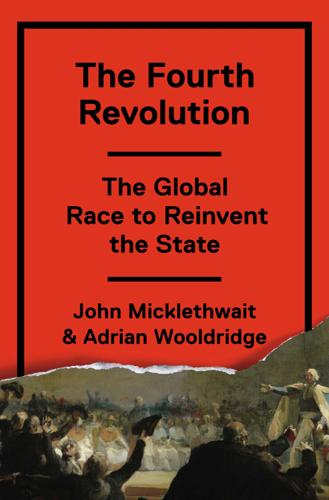
The Fourth Revolution: The Global Race to Reinvent the State
by
John Micklethwait
and
Adrian Wooldridge
Published 14 May 2014
But there was a tendency everywhere for kings to promote powerful bureaucrats (Thomas Cromwell in England, Cardinal Richelieu in France, Count-Duke Olivares in Spain) who expanded the power of central government, established more efficient tax-gathering machines, and rationalized the higgledy-piggledy mass of local tolls, regulations, and restrictions that had characterized medieval Europe. This allowed Europe to escape from the problem that doomed Indian civilization to impotence: a state that was so weak—or so “soft” in Gunnar Myrdal’s phrase—that society constantly dissolved into petty principalities, principalities that inevitably fell prey to more powerful invaders, be they Muslims or Britons. At the same time even Europe’s most powerful monarchs were far less powerful than the Chinese emperor, whose vast bureaucracy (staffed by the brightest people in the country chosen by rigorous examination) had no opposition from China’s landed aristocracy or the urban middle classes.
…
Enlightened bureaucrats built the folkhemmet, or “people’s home,” where the state looked after everybody’s needs and blond bureaucrats organized everything along rational lines, right down to the correct design for your kitchen. Meanwhile socially responsible companies like Volvo and Ericsson generated wealth. This was “the middle way” between capitalism and communism, celebrated by Marquis Childs in his 1936 book of that name. Sweden even had its own version of the Webbs in Gunnar and Alva Myrdal, who championed economic planning, eugenic breeding, and men sharing the housework. But in the 1960s, as the concept of equality broadened, Sweden veered even further left than the rest of Europe. It abolished selective education in the name of “child-centered learning” (i.e., letting teenagers run riot) and advocated the equalization of incomes in the name of social solidarity.
…
The Social Democratic Party, which ruled the place for forty-four uninterrupted years from 1932 to 1976, kept squeezing business with higher taxes and more regulations. “The era of neo-capitalism is drawing to an end,” said Olof Palme, the party’s leader, in 1974. “It is some kind of socialism that is the key to the future.” That was also the year that Gunnar Myrdal was given a Nobel Prize in economics, sharing it, in a bizarre twist of fate, with Friedrich Hayek. Eight years later Alva won the Nobel Peace Prize for her work on disarmament. By 1990 it would be hard to think of anywhere that more perfectly illustrated Lee Kuan Yew’s dismissive “all you can eat” state.
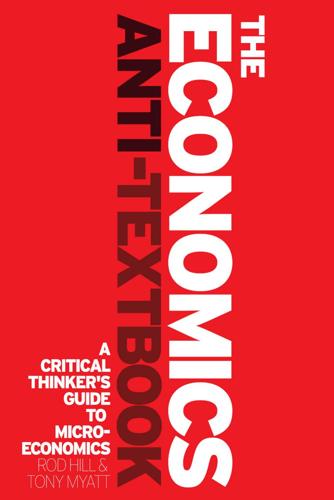
The Economics Anti-Textbook: A Critical Thinker's Guide to Microeconomics
by
Rod Hill
and
Anthony Myatt
Published 15 Mar 2010
John Weeks believed that it was just self-interest: ‘our profession gains disproportionately from the existing social and economic order. This is why economics provides no guide to an alternative social and economic system in which inequality, acquisitiveness, and exploitation would be eliminated’ (ibid.: 1). He might be right, but our concern here is simply to illuminate the value judgements, not to explain them. Gunnar Myrdal (1969) dismissed any pretence that social scientists might make about their ‘objectivity’ and pointed out that value judgements must permeate their work. Instead, he advocated making one’s value judgements explicit so the reader would be aware of them and could decide whether to accept them. Sadly, his advice has gone largely unheeded and readers must be alert to detect hidden value judgements on their own.
…
It tends to favour sustained overall development, and it delivers increased opportunities to the poorest groups in a society.’ François Bourguignon, chief economist, World Bank (World Bank 2005) The economists who participated in the development of the advanced welfare states of northern Europe in the middle of the twentieth century learned from experience its growth-enhancing effects. Gunnar Myrdal explained that welfare state policies were created despite the belief that they would result in lower growth. But then ‘the idea emerged that welfare reforms, instead of being costly for a society, were actually laying the basis for a more steady and rapid economic growth’. Investing in housing, nutrition, health and education and redistributing income to families with children, especially to underprivileged families, pays off by avoiding future costs and increasing future productivity (Myrdal 1973: 40–41).
…
Looking at the experience of about twenty OECD countries between the early 1960s and the mid-1990s, he found no significant effect of social transfers on economic growth (Lindert 2004b: vol. 2, ch. 18). 211 9 | Government, taxation most prosperous countries and its people among the happiest. How can a place like Denmark exist if there is a serious trade-off between efficiency and equity? While a lot can be learned from the experience of places like Denmark or Gunnar Myrdal’s Sweden, economists also like to consider the combined experience of many countries. The endogenous growth theories were developed at the same time as enough data had accumulated to make statistical examination of a large sample of countries possible (Lindert 2004a). Studies examined the growth–inequality relationship looking at groups of countries, while taking into account the many other factors that economic theory suggests will also influence growth (Persson and Tabellini 1994; Alesina and Rodrik 1994; Barro 2000).
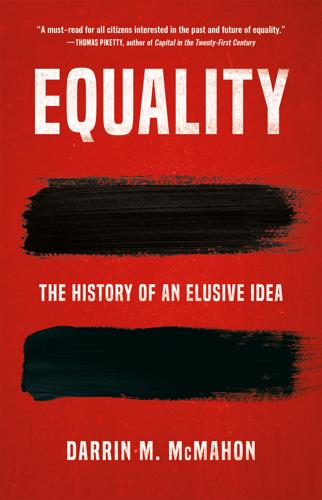
Equality
by
Darrin M. McMahon
Published 14 Nov 2023
Already in the 1950s, sporadic UN reports remarked on the “gap” in levels of income, wealth, production, and consumption with respect to developing nations, noting that it was “wider than before the Second World War,” and growing more so. And although these early reports tended to be framed optimistically, dissident economists working at the United Nations were in the process of developing more critical perspectives.58 The two most influential were the Swede Gunnar Myrdal and the Argentine Raúl Prebisch, who served, respectively, as the executive secretary of the United Nations Economic Commission for Europe and that of Latin America. From the late 1940s, Prebisch began to call the mainstream assumptions of development theory into question, arguing, in The Economic Development of Latin America and Its Principal Problems (1950), that Ricardian notions of the mutual benefits of trade were misplaced.
…
Dosman, The Life and Times of Raul Prebisch, 1901–1986 (Montreal: McGill-Queen’s University Press, 1988); Margarita Fajardo, The World That Latin America Created: The United Nations Economic Commission for Latin America in the Development Era (Cambridge, MA: Harvard University Press, 2022). 60. Gunnar Myrdal, Development and Under-Development: A Note on the Mechanism of National and International Economic Inequality (Cairo: National Bank of Egypt, 1956), 47; Myrdal, An International Economy: Problems and Prospects (New York: Harper and Brothers, 1956), 323 (italics in original); Myrdal, Beyond the Welfare State: Economic Planning and Its International Implications (New Haven, CT: Yale University Press, 1960), 148.
…
On Myrdal’s concept of a welfare world, see Moyn, Not Enough, 104–109; Marianne Johnson, “Swedish Intellectual Thought on Inequality and a ‘Welfare World,’” Global Intellectual History (April 2022), https://doi.org/10.1080/23801883.2022.2062415; Isaac Nakhimovsky, “An International Dilemma: The Postwar Utopianism of Gunnar Myrdal’s Beyond the Welfare State,” Humanity: An International Journal of Human Rights, Humanitarianism, and Development 8, no. 1 (Spring 2017): 185–194. 61. Mater et Magistra (On Christianity and Social Progress), encyclical of Pope John XXIII, May 15, 1961, sec. 157, available at The Holy See, www.vatican.va/content/john-xxiii/en/encyclicals/documents/hf_j-xxiii_enc_15051961_mater.html, cited and analyzed in Christiansen, “Wide, Wider, Widening”; Barbara Ward, The Rich Nations and the Poor Nations (New York: Norton, 1962), 14–15. 62.

Wealth and Poverty: A New Edition for the Twenty-First Century
by
George Gilder
Published 30 Apr 1981
The problem is international as well. In Sweden, where progressive taxes and social programs are more advanced than under the American system, the divorce rate is 60 percent higher, and illegitimacy exceeds ours by a factor of three, with one-third of Swedish children born out of wedlock,23 and as famed socialist Gunnar Myrdal said, “High taxes are making us into a nation of hustlers.”24 The income distribution tables also propagate a statistical illusion with regard to the American rich. While the patterns of annual income changed rather little in the 1970s, there was a radical shift in the distribution of wealth.
…
Particularly in Britain and Sweden there is ample evidence that tax avoidance reached epidemic levels in the late 1970s. In Sweden worker absenteeism rose to an annual average of sixteen days (compared to 3.5 days in the United States)27 and workforce withdrawal became such a problem that the government proposed to tax hobbies and other leisure activities. Famed economist Gunnar Myrdal, a lifetime socialist, was led to denounce income taxes. Myrdal wrote,My main conclusion is that income taxes are bad taxes from several points of view.... For the majority of people... a high and progressively increasing marginal tax rate must decrease the willingness to work more than necessary....
…
Of all the deficiencies in our income tax system, for me the most serious is that the laws directly invite us to commit tax evasion and tax cheating. The honesty of Swedes has been a source of pride to me and my generation. Now I have a feeling that we are becoming a nation of hustlers because of bad laws!28 Gunnar Myrdal, meet Arthur Laffer. In the late 1970s Governor Carlos Romero Barcelo of Puerto Rico was so fortunate as to meet Laffer; and Jude Wanniski, who had also conferred with Barcelo, was bold enough to end his book with a prediction that retrenchment of Puerto Rico’s upper-bracket tax rates would bring higher growth and revenues.
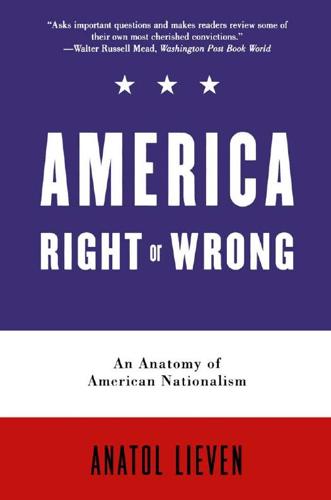
America Right or Wrong: An Anatomy of American Nationalism
by
Anatol Lieven
Published 3 May 2010
The intense, specifically Southern racism of President Woodrow Wilson, for example, deeply compromised his liberal internationalism in the eyes of the Japanese and many other non-White peoples of the 41 AMERICA RIGHT OR WRONG world, in his own time and since.86 As the American theologian, moralist and political thinker Reinhold Niebuhr (1892-1971) wrote in 1943, "Our racial pride is incompatible with our responsibilities in the world community. If we do not succeed in chastening it, we shall fail in our task." Gunnar Myrdal's great work of 1944, An American Dilemma, was also motivated in part by anxiety at the way in which racism at home was weakening the American struggle against totalitarianism.87 During the early years of the Cold War, recognition of the way in which domestic treatment of Blacks undermined U.S. power and influence in the struggle with communism was a major factor in the decision of U.S. national elites to eliminate the public face of this racism in the 1950s and 1960s.88 Much earlier, President Abraham Lincoln had warned that slavery weakened America's world democratic mission by exposing the nation to the charge of hypocrisy.89 When comparing the contemporary United States to other great civilizations of the past, it is vitally important to make a distinction between racism and cultural prejudice.
…
The transition was closely related to the emergence of new forms of evangelical Protestant popular religion, which radically downgraded the position of the old elite-dominated churches and which had strong anti-intellectual and antimodern biases. This democracy categorically excluded Indians, Blacks and women.42 As Jackson's own mixture of Southern and Frontier origins indicates, the American Frontier and the American South might be treated almost as one cultural complex in terms of their cultural impact on American nationalism. Gunnar Myrdal in 1944 described the South as a "stubbornly lagging American frontier society."43 What we have been taught by Hollywood to think of as the classic Frontier, in the West, was settled largely by Southerners with Southern cultural traits. The mingling of the Southern and Western traditions is at its most obvious in Texas, the home state of George W.
…
Kenneth Minogue, Nationalism (New York: Basic Books, 1997). 11. Richard Hofstadter, The Age of Reform (New York: Vintage Books, 1955), p. 15. 12. Figures in "Global Attitudes 2002:44-Nation Major Survey," The Pew Research Center for the People and the Press, Washington, DC, released November 5, 2003. See www.people-press.org. 13. Gunnar Myrdal, An American Dilemma: The Negro Problem and Modern Democracy (New York: Harper and Bros., 1944), p. xlviii. 223 N O T E S TO P A G E S 8-11 14. Cf. David H. Bennett, The Party of Fear: From Nativist Movements to the New Right in American History (New York: Random House, 1988), pp. 7-8; for a succinct recent statement of the nativist position on the Creed from a leading conservative intellectual, see Samuel Huntington, "The Hispanic Challenge," Foreign Policy (March/April 2004), and "Dead Souls: The Denationalization of the American Elite," National Interest, no. 75 (Spring 2004). 15.
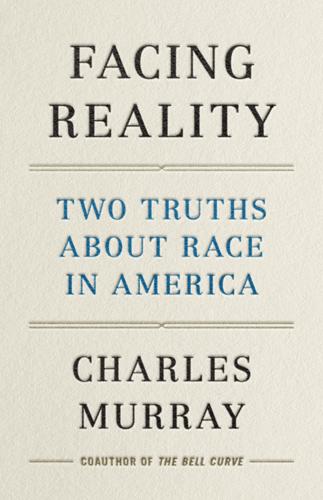
Facing Reality: Two Truths About Race in America
by
Charles Murray
Published 14 Jun 2021
Our history is riddled with failures to achieve our ideal, starting with the Declaration’s failure to condemn slavery, but the American creed itself has always been powerful. Over the course of the nineteenth century, both the abolitionist and the feminist movements drew their moral authority and their ultimate successes from appeals to live up to the American creed. In the early 1940s, writing in his landmark book, An American Dilemma, the Swedish economist Gunnar Myrdal capitalized the term and marveled at the creed’s continuing universality. “Even a poor and uneducated white person in some isolated and backward rural region in the Deep South who is violently prejudiced against the Negro and intent upon depriving him of civic rights and human independence, has also a whole compartment in his valuation sphere housing the entire American Creed of liberty, equality, justice, and fair opportunity for everybody,” he wrote.

How Democracies Die
by
Steven Levitsky
and
Daniel Ziblatt
Published 16 Jan 2018
The genius of the first generation of America’s political leaders was not that they created foolproof institutions, but that, in addition to designing very good institutions, they—gradually and with difficulty—established a set of shared beliefs and practices that helped make those institutions work. The strength of the American political system, it has often been said, rests on what Swedish Nobel Prize–winning economist Gunnar Myrdal called the American Creed: the principles of individual freedom and egalitarianism. Written into our founding documents and repeated in classrooms, speeches, and editorial pages, freedom and equality are self-justifying values. But they are not self-executing. Mutual toleration and institutional forbearance are procedural principles—they tell politicians how to behave, beyond the bounds of law, to make our institutions function.
…
the legislature voted to shrink: “Rebuked Twice by Supreme Court, North Carolina Republicans Are Unabashed,” New York Times, May 27, 2017. “American democracy”: Quoted in Purdy, “North Carolina’s Partisan Crisis.” Baron de Montesquieu pioneered: Baron von Montesquieu, The Spirit of the Laws (Cambridge: Cambridge University Press, 1989). American Creed: Gunnar Myrdal, An American Dilemma: The Negro Problem and American Democracy (New York: Harper and Brothers, 1944), pp. 3–4. “The Democratic negotiating position”: David Faris, “It’s Time for Democrats to Fight Dirty,” The Week, December 1, 2016. “doing little to stop him”: Dahlia Lithwick and David S. Cohen, “Buck Up, Democrats, and Fight Like Republicans,” New York Times, December 14, 2016.

Nation-Building: Beyond Afghanistan and Iraq
by
Francis Fukuyama
Published 22 Dec 2005
-U.N. aid community deployed on the Korean peninsula were in line with contemporary international thinking on how economic development should proceed. A consensus emerged in the 1950s that national economic planning should be the focal point of development and that the state was the best institution in poor nations to push development forward. In the 1950s and 1960s, influential thinkers in international economics like Gunnar Myrdal, W. Arthur Lewis, Alexander Gerschenkron, and John Kenneth Galbraith emphasized this point of view. Echoing the earlier opinions of Fairbank and others, such thinking held that governments had to perform certain economic and social tasks best done through state planning, as critical sectors of civil society were often too weak to perform the tasks alone.10 Planning was therefore widely accepted in the United States and internationally as an integral part of effective nation-building in the postwar period.
…
“The Voluntary Agency—What Is It?” May 22, 1957, reel 21, Records Relating to the Internal Affairs of Korea, 1955–59, RG 59, National Archives, College Park, Md. 9. Burton I. Kaufman, Trade and Aid: Eisenhower’s Foreign Economic Policy, 1953– 1961 (Baltimore: Johns Hopkins University Press, 1982). 10. Gunnar Myrdal, Development and Underdevelopment: A Note on the Mechanism of National and International Economic Inequality (Cairo: National Bank of Egypt, 1956), 62; W. Arthur Lewis, The Theory of Economic Growth (Homewood, Ill.: Richard D. Irwin, 1955); Alexander Gerschenkron, Economic Backwardness in Historical Perspective (Cambridge, Mass.: Harvard University Press, 1962); John Kenneth Galbraith, Economic Development (New York: Houghton Mifflin, 1962). 11.
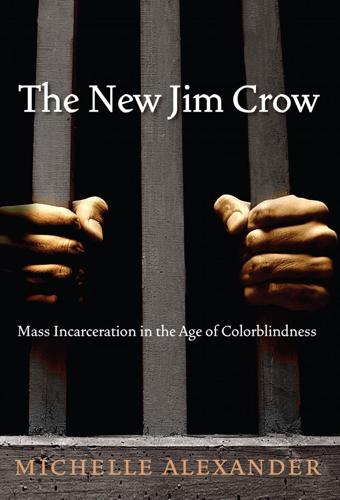
The New Jim Crow: Mass Incarceration in the Age of Colorblindness
by
Michelle Alexander
Published 24 Nov 2011
The blatant contradiction between the country’s opposition to the crimes of the Third Reich against European Jews and the continued existence of a racial caste system in the United States was proving embarrassing, severely damaging the nation’s credibility as leader of the “free world.” There was also increased concern that, without greater equality for African Americans, blacks would become susceptible to communist influence, given Russia’s commitment to both racial and economic equality. In Gunnar Myrdal’s highly influential book The American Dilemma, published in 1944, Myrdal made a passionate plea for integration based on the theory that the inherent contradiction between the “American Creed” of freedom and equality and the treatment of African Americans was not only immoral and profoundly unjust, but was also against the economic and foreign-policy interests of the United States.30 The Supreme Court seemed to agree.
…
Hamilton, Black Power: The Politics of Liberation in America (New York: Random House, 1967). 25 Woodward, Strange Career of Jim Crow, 64. 26 William Julius Wilson, The Declining Significance of Race: Blacks and Changing American Institutions (University of Chicago Press, 1978), 54. 27 Woodward, Strange Career of Jim Crow, 80. 28 Ibid., 81. 29 Ibid., 7. 30 Gunnar Myrdal, An American Dilemma: The Negro Problem and Modern Democracy (New York: Harper & Brothers, 1944). 31 Manning Marable, Race, Reform and Rebellion: The Second Reconstruction in Black America, 1945-1990 (Jackson: University Press of Mississippi, 1991), 44; see also Michael Klarman, “Brown, Racial Change, and the Civil Rights Movement,” Virginia Law Review 80 (1994), 7, 9. 32 Marable, Race, Reform and Rebellion, 69. 33 Stephen F.
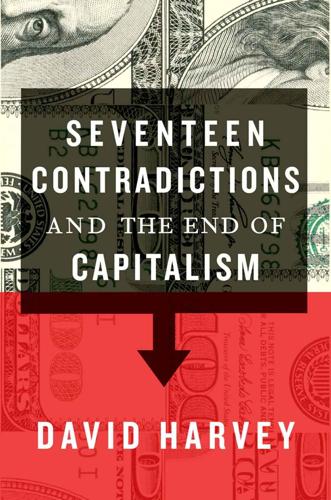
Seventeen Contradictions and the End of Capitalism
by
David Harvey
Published 3 Apr 2014
Dominant classes and hegemonic class alliances can form and lend a specific character to political as well as to economic activity within the region. Regional economies form a loosely connected mosaic of uneven geographical development within which some regions tend to become richer while poor regions get poorer. This happens because of what Gunnar Myrdal calls circular and cumulative causation.1 Advanced regions draw new activity to themselves because of the vibrancy of their markets, the greater strength of their physical and social infrastructures and the ease with which they can procure their necessary means of production and labour supplies.
…
Alfred Chandler, The Visible Hand: The Managerial Revolution in American Business, Cambridge, MA, Harvard University Press, 1993. 8. Giovanni Arrighi, Adam Smith in Beijing, London, Verso, 2010. 9. Karl Marx, Capital, Volume 3, Harmondsworth, Penguin, 1981, p. 490. Contradiction 11: Uneven Geographical Developments and the Production of Space 1. Gunnar Myrdal, Economic Theory and Underdeveloped Regions, London, Duckworth, 1957. 2. David Harvey, Spaces of Capital, Edinburgh, Edinburgh University Press, 2002. 3. Henri Lefebvre, The Production of Space, Oxford, Basil Blackwell, 1989. Contradiction 12: Disparities of Income and Wealth 1.
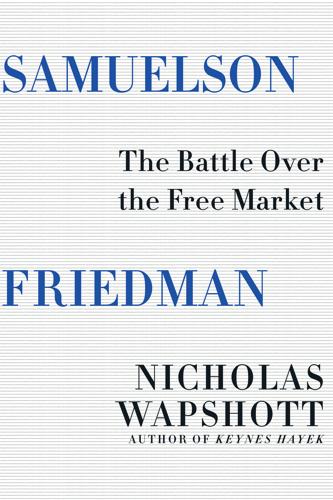
Samuelson Friedman: The Battle Over the Free Market
by
Nicholas Wapshott
Published 2 Aug 2021
“All my life I have tried to take this warning to heart,” Samuelson said, “and I dare call it to your favorable attention.” Four years after Samuelson’s Nobel in 1970, Friedrich Hayek was awarded the seventh Nobel Prize for economics, but his nomination was considered so controversial he was obliged to share the award with Gunnar Myrdal, a left-leaning Swedish economist and sociologist known for his work on exposing racial problems in America. Samuelson was pleased for Hayek. “In my judgment his was a worthy choice,” said Samuelson. “And yet in the 1974 senior common rooms of Harvard and MIT, the majority of the inhabitants there seemed not to even know the name of this new laureate.”22 SIX YEARS ELAPSED between Samuelson and Friedman being awarded the economics Nobel.
…
Nayer, October 13, 1970. Hoover Institution Friedman archive. 18.Samuelson named Jacob Viner, Frank Knight, Paul Douglas, Joseph Schumpeter, Wassily Leontief, Gottfried Haberler, Alvin Hansen, Lloyd Metzler, Robert Solow, James Tobin, Lawrence Klein, Robert Mundell, Joseph Stiglitz, Bertil Ohlin, Gunnar Myrdal, Erik Lundberg, Ingvar Svennilson, Gustav Cassel, Erik Lindahl, and Knut Wicksell. 19.https://www.nobelprize.org/uploads/2018/06/samuelson-lecture.pdf. 20.Ibid. 21.Thorstein Bunde Veblen, born Torsten Bunde Veblen in Norway (July 30, 1857–August 3, 1929), economist and sociologist best known for his idea of “conspicuous consumption”: people engage in conspicuous consumption, along with “conspicuous leisure,” to demonstrate their wealth or to mark social status. 22.Samuelson, “A few remembrances of Friedrich von Hayek (1899–1992),” Journal of Economic Behavior & Organization, vol. 69, no. 1, January 2009, pp. 1–4. 23.Friedman and Friedman, Two Lucky People, p. 445. 24.Larry Martz, “A Nobel for Friedman,” Newsweek, October 25, 1974. 25.Friedman and Friedman, Two Lucky People, p. 442. 26.Ibid. 27.Newsweek, October 25, 1976. 28.Friedman letter to Samuelson, October 20, 1976.
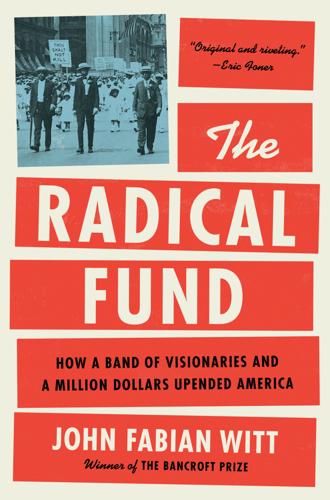
The Radical Fund: How a Band of Visionaries and a Million Dollars Upended America
by
John Fabian Witt
Published 14 Oct 2025
In 1910, counties in which Black people made up less than a quarter of the population provided white schools three times the per-pupil funding of Black schools. Counties in which Black people made up three-quarters or more of the population provided white schools nearly fourteen times the per-pupil funding of Black schools. Three decades later, the Swedish sociologist Gunnar Myrdal explained the math. More Black students meant more Black school dollars to siphon into white schools. “If, for instance, there are twice as many Negroes as white children,” he wrote in his landmark study of segregation in the South, “every dollar per pupil taken from the Negro group means two dollars per pupil added to the appropriation for the white group.”19 Bond put the point more bluntly than the mathematical Swede.
…
Racial inequalities appearing on the face of public salary schedules were far easier to attack than discrimination in discretionary school funding decisions. Moreover, after litigation, salary discrimination would be far easier to monitor and manage against backsliding. “There are,” concluded Swedish social scientist Gunnar Myrdal a few years later in his influential study of race in the United States, “few major cases of racial wage discrimination so clear-cut and so pronounced as that found in the teaching profession in the South.”39 Gibbs v. Broome, filed by Houston in 1937, was an early case brought under the American Fund grant.
…
“really pays”: JWJ, “The Importance of the Negro to the South,” New York Age, Aug. 16, 1916, in Wilson, Selected Writings of James Weldon Johnson, 1:115–16. every person: JWJ, “The Apportionment of Public School Funds in the South,” New York Age, Mar. 11, 1915, in Wilson, Selected Writings of James Weldon Johnson, 1:111–113. theft from Black students: Carter Godwin Woodson, The Mis-Education of the Negro (Associated Publishers, 1933), 28, 121; Givens, Fugitive Pedagogy, 94–125. 19. “double taxation”: Du Bois, “Negro Education,” 176. “costs double”: Alain Locke, “Negro Education Bids for Par,” Survey Graphic, Sept. 1925, 567. higher percentages: Bond, Education of the Negro, 95. three times: Margo, “Race Differences,” 204. “every dollar”: Gunnar Myrdal, An American Dilemma: The Negro Problem and Modern Democracy (Harper & Brothers, 1944), 1:341. 20. “cash value”: Bond, Education of the Negro, 233. 21. “look into the finances”: JWJ to Arthur B. Spingarn, May 16, 1923, b. 19, f. 451, JWJP. pay the dues: Mary White Ovington to RNB, June 18, 1923, r. 31, b. 49, AFPSR; Sullivan, Lift Every Voice, 53–58. 22. still flush: Stuart Chase, AFPS Audit—1923, Jan. 8, 1924, r. 3, AFPSR (increase in market value). without giving systematic: Scott Nearing to RNB, Oct, 13, 1923, r. 1, AFPSR; RNB to CG, Nov. 29, 1924, r. 1, AFPSR; Scott Nearing to RNB and Lewis Gannett, Memorandum in re Fund Policy, Jan. 16, 1924, r. 2, AFPSR; Two Questions of Fund Policy, Proposed by Scott Nearing, Feb. 24, 1924, r. 2, AFPSR; ME, Memorandum, n.d. [1926?]
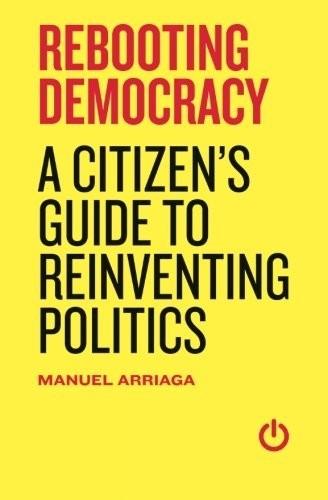
Rebooting Democracy: A Citizen's Guide to Reinventing Politics
by
Manuel Arriaga
Published 1 Jan 2014
When that happens, less income will be available for consumption, and we’ll find ourselves back at square one. If we step off the treadmill for a moment, we see that this cycle of increasing consumption and accumulating debt is impossible to sustain. It takes little more than “hard, simple thinking” (as Nobel-prize-winning economist Gunnar Myrdal put it) to conclude that, on a planet with finite resources, ever-increasing consumption threatens us with environmental collapse. Not much more effort is involved in understanding the issues caused by a gigantic mountain of debt. In May 2013, the Wall Street Journal reported that the total world debt load stood at 313% of the global GDP.
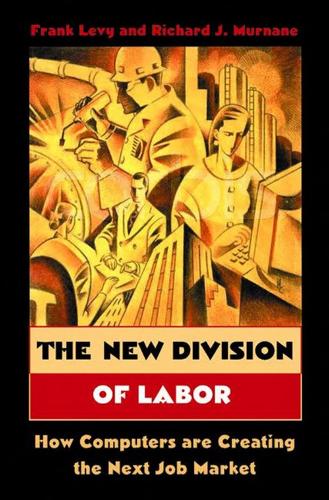
The New Division of Labor: How Computers Are Creating the Next Job Market
by
Frank Levy
and
Richard J. Murnane
Published 11 Apr 2004
Most of all, we thank our wives, Katherine Swartz and Mary Jo Murnane, for sharing their lives with us and for always being there for us. This page intentionally left blank This page intentionally left blank ON MARCH 22, 1964, THE AD HOC COMMITTEE ON THE TRIPLE Revolution sent a fourteen-page memorandum to President Lyndon Johnson. The signers included chemist Linus Pauling (recipient of two Nobel Prizes), economist Gunnar Myrdal (a future Nobel Prize-winner), and Gerard Piel, publisher of Scientific American. In the memo, the committee warned the president of long-run threats to the nation beginning with the likelihood that computers would soon create mass unemployment. A new era of production has begun. Its principles of organization are as different from those of the industrial era as those of the industrial era were different from the agricultural.
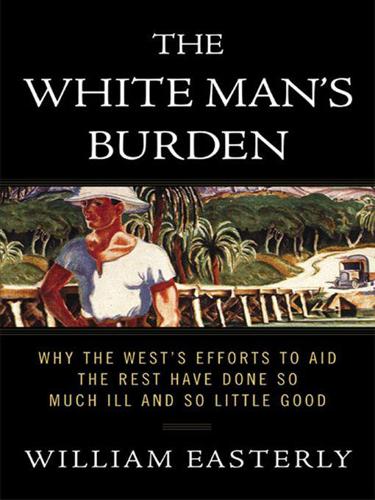
The White Man's Burden: Why the West's Efforts to Aid the Rest Have Done So Much Ill and So Little Good
by
William Easterly
Published 1 Mar 2006
A whole new field of economics was invented called “development economics.” A Polish-born economist named Paul Rosenstein-Rodan in the 1940s called for a “Big Push” to move the third world into the first. Scholars in politics and sociology and many other fields studied “development” of the poor countries. Economist, sociologist, and later Nobel laureate Gunnar Myrdal said in 1956 that the answer to poverty was a plan: “It is now commonly agreed that an underdeveloped country should have…an overall integrated national plan…under the encouraging and congratulating applause of the advanced countries.” Myrdal used dramatic language in favor of such plans, language that echoes today’s (italics in original): “The alternative to making the heroic attempt is continued acquiescence in economic and cultural stagnation or regression which is politically impossible in the world of today.” 38 Amen to that, except that the heroic plan failed to end economic stagnation or even to realize its potential to address simpler needs.
…
“To the peoples sitting in darkness,” in Charles Neider, ed., The Complete Essays of Mark Twain, Garden City, N.Y.: Doubleday, 1963. 36.Rist, p. 60. 37.M. J. Bonn, Crumbling of Empire: The Disintegration of World Economy, London: Allen & Unwin, 1938, quoted in Knorr, British Colonial Theories. 38.Gunnar Myrdal, “Development and Underdevelopment,” Cairo, 1956, pp. 63 and 65, quoted in P. T. Bauer, Dissent on Development, Cambridge: Harvard University Press, 1971; rev. ed., 1976, p. 70. 39.See Peter Bauer, Economic Analysis and Policy in Underdeveloped Countries, Durham, N.C.: Duke University Press, 1957; and Bauer, Dissent on Development, Cambridge: Harvard University Press, 1971. 40.Speech by Gordon Brown at a DFID/UNDP seminar, “Words into Action in 2005,” January 26, 2005, Lancaster House, London. 41.Multiplying their respective 2003 growth rates by their 2002 Purchasing Power Parity (PPP) GDP in current U.S. dollars.
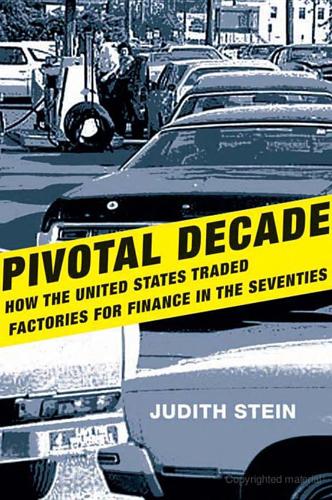
Pivotal Decade: How the United States Traded Factories for Finance in the Seventies
by
Judith Stein
Published 30 Apr 2010
By the end of the decade, Democrats outnumbered Republicans two to one. Postwar prosperity altered the analysis of modern society. John Kenneth Galbraith’s Affluent Society (1957) and New Industrial State (1968), Daniel Bell’s End of Ideology (1959), Robert Theobald’s Challenge of Abundance (1961), and Gunnar Myrdal’s Challenge to Affluence (1963) all rested upon the assumption that the historic conflicts between capital and labor had been resolved. Affluence fostered new thinking about leisure, human relations, consumerism, and a host of extra-economic concerns. Keynes was a pioneer here too. In 1932, he thought that “the day is not far off when the economic problem will take the back seat where it belongs, and … the arena of the heart and head will be occupied where it belongs, or reoccupied by our real problems—the problems of life and of human relations, of creation and behavior and religion.”51 No longer did leaders accept the ancient nostrum that the poor will always be with us.
…
But everyone agreed that unemployment would hover around 7.7 percent during 1976. So the economic debates continued. When economies do poorly, the reigning economic paradigms are questioned. Keynesianism was in trouble, but the alternative was not evident. The Nobel Prize committee perfectly captured the impasse. On October 9, 1974, it announced that Gunnar Myrdal, the social democratic Swedish economist, and Friedrich von Hayek, the Austrian-born British free marketer, would share the prize for economics.65 Following that script, left and right formulated alternatives for the United States. CRITIQUE OF KEYNES — THE LEFT Initially, the critique of Keynes from the left was more powerful because it was powered by mass movements.
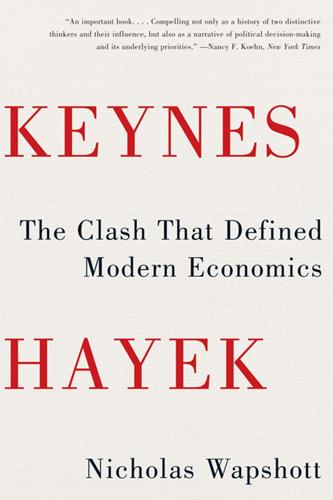
Keynes Hayek: The Clash That Defined Modern Economics
by
Nicholas Wapshott
Published 10 Oct 2011
As Samuelson recalled, “In the 1974 senior common rooms of Harvard and MIT, the majority of the inhabitants there seemed not to even know the name of this new laureate.”29 The reasoning behind the Nobel committee’s decision to recognize Hayek’s contribution to “pioneering work in the theory of money and economic fluctuations” was not quite the endorsement it seemed. Hayek had to share the honor with Gunnar Myrdal,30 a Swedish Keynesian economist and social democratic politician. According to Friedman,31 by yoking Myrdal to Hayek the Nobel committee hoped to avoid the charge of sympathizing with the Left. In the event, the double bill provoked substantial controversy, with Hayek declaring that Nobel Prizes for economics were absurd and worth neither giving nor receiving, and Myrdal condemning the Nobel committee for honoring Hayek.
…
Speaker of the House of Representatives (1995–99). 23 Interview of Newt Gingrich, Spring 2001, Commanding Heights, PBS, http://www.pbs.org/wgbh/commandingheights/shared/pdf/int_newtgingrich.pdf. 24 Friedman and Friedman, Two Lucky People, p. 388. 25 Ibid., p. 386. 26 Ibid., pp. 386–387. 27 Milton Friedman, in “Commanding Heights, PBS, http://www/pbs.org/wgbh/commandingheights/shared/minitextlo/tr_show01.html#1. 28 Herbert Stein, Presidential Economics (Simon & Schuster, New York, 1985), p. 255. 29 Paul Samuelson, “A Few Remembrances of Friedrich von Hayek (1899–1992).” 30 Gunnar Myrdal (1898–1987), Swedish economist and government minister whose pioneering work on the living conditions of African-Americans is credited with the campaign to educate all Americans that culminated in the Brown v. Board of Education Supreme Court decision. Friedman, who met him a number of times at Columbia, thought him “awfully charming and intelligent.”
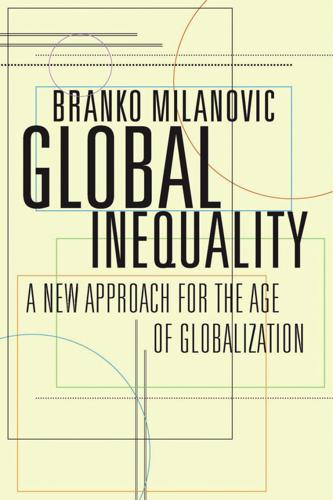
Global Inequality: A New Approach for the Age of Globalization
by
Branko Milanovic
Published 10 Apr 2016
Politicians in the West who pushed for greater reliance on markets in their own economies and the world after the Reagan-Thatcher revolution could hardly have expected that the much-vaunted globalization would fail to deliver palpable benefits to the majority of their citizens—that is, precisely to those whom they were trying to convince of the advantages of neoliberal policies compared with more protectionist welfare regimes. But such a statement would appear even more surprising to those, including the Nobel Prize–winning economist Gunnar Myrdal, who worried in the late 1960s that the Asian masses, numbering many millions and barely able to survive on their low incomes, would remain mired in perpetual poverty. An entire literature of the 1950s and 1960s (such as Paul Ehrlich’s The Population Bomb [1968]) had as its main theme the dangers that population growth presented for economic development in the Third World.
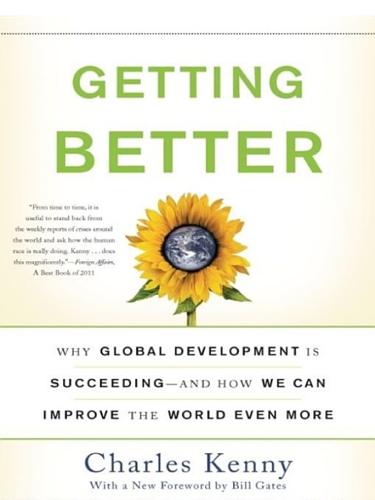
Getting Better: Why Global Development Is Succeeding--And How We Can Improve the World Even More
by
Charles Kenny
Published 31 Jan 2011
For every other researcher who runs cross-country growth analyses, perhaps it is time to shut down the statistics programs and play minesweeper on the computer instead. Of course, along with most of the thinking about what causes growth, the idea that growth may be too complex to model isn’t new, either. Forty-plus years ago, Nobel prize–winning Swedish economist Gunnar Myrdal argued that economic growth “concerns a complex of interlocking, circular, and cumulative changes.” Myrdal in turn may have been remembering John Maynard Keynes, the dominant economist of the first half of the twentieth century, who argued that “we are faced at every turn with the problems of organic unity, of discreteness, of discontinuity—the whole is not equal to the sum of the parts, comparisons of quantity fail us, small changes produce large effects, and the assumptions of a uniform and homogeneous continuum are not satisfied.”17 And Keynes no doubt lifted the idea from somewhere in Adam Smith’s collected works.
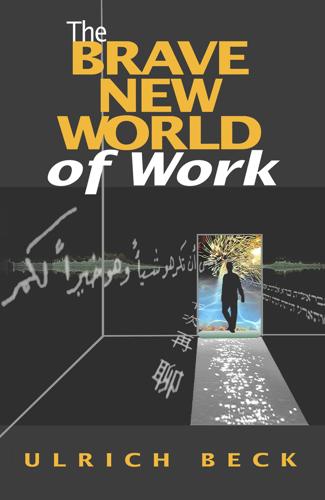
Brave New World of Work
by
Ulrich Beck
Published 15 Jan 2000
American liberalism, Michael Walzer has argued, distinguishes itself by the most decisive emphasis on the rights of the individual, which means that the state is conceived as strictly neutral, without any cultural or religious project or indeed any collective goal beyond personal freedom and the physical protection, welfare and security of its citizens.82 At the same time, Americans recognize and experience something like a ‘national community’ (much more chosen or elective than the German Gemeinschaft), which is what Gunnar Myrdal has called the ‘American faith’ and others, alluding to Rousseau, call a ‘civil religion’. According to the ideal, this living faith in democracy and political freedom supersedes all the differences and oppositions of skin colour, religious denomination, income level, gender and political persuasion.
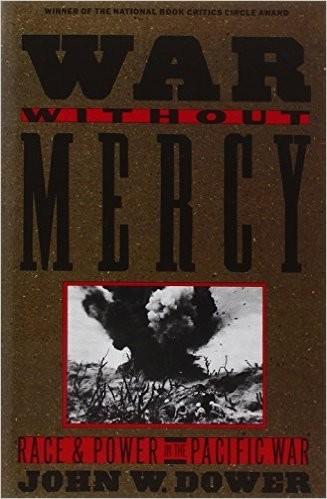
War Without Mercy: PACIFIC WAR
by
John Dower
Published 11 Apr 1986
A confidential poll conducted by black interviewers found that 18 percent of blacks queried admitted “pro-Japanese inclinations,” while a mid-war book on the theme “inside Black America” concluded from a survey of editorials and letters to the editor in the black press that blacks as a whole neither supported nor condemned Japan, but rather viewed the war in Asia from a “neutralized” stance. Gunnar Myrdal, whose massive pioneer study of black Americans was published in 1944, emphasized their “thoroughly American” outlook and their loyalty in the current war. As a whole, he concluded, they were as prodemocratic and antifascist as most white groups. At the same time, Myrdal also observed that a modest number took “vicarious satisfaction in imagining a Japanese (or German) invasion of the Southern states”; and he warned that if black grievances remained unredressed after the war, it was difficult to predict how they would react “if later a new war were to be fought more definitely along color lines.”38 Beginning in the 1930s, the Japanese did attempt to influence black opinion in the United States, but their efforts to this end were desultory and largely ineffective.
…
For Marshall, see Glen C. H. Perry, “Dear Bart”: Washington Views of World War II (1982: Greenwood Press), 184. Virginius Dabney, “Nearer and Nearer the Precipice,” Atlantic Monthly, January 1943, 94–100. 38. Roi Ottley, ‘New World A-Coming’: Inside Black America (1943: Houghton Mifflin), 341–42. Gunnar Myrdal, An American Dilemma: The Negro Problem and Modern Democracy (1944: Harper & Row), 815, 1016, the opinion poll is in ibid., 1400. 39. On the Japanese ties to black militants, see Erdmann Benyon, “The Voodoo Cult among Negro Migrants in Detroit,” American Journal of Sociology 43.6 (May 1938): esp 904; C.
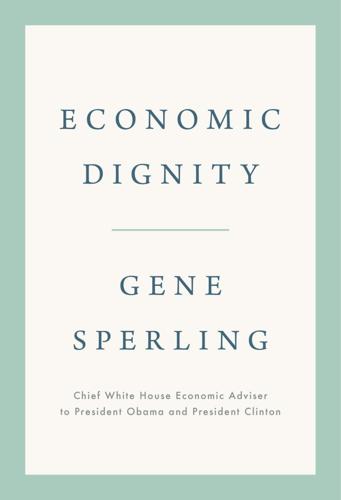
Economic Dignity
by
Gene Sperling
Published 14 Sep 2020
HISTORICAL ROOTS The protection of individual dignity has been an American ideal since our founding, even in the face of its blatant and categorical denial to African Americans and many others. Alexander Hamilton opens The Federalist Papers with the argument that the adoption of the Constitution “is the safest course for your liberty, your dignity, and your happiness.”16 Swedish philosopher Gunnar Myrdal’s book An American Dilemma identifies “the essential dignity of the individual” as integral to “the essential meaning of the nation’s early struggle for independence.”17 We can better understand the evolution of economic dignity in our history by seeing it as divided into two broad categories: “positive” and “negative” dignity.
…
Mark Paul, William Darity Jr., and Darrick Hamilton, “The Federal Job Guarantee—A Policy to Achieve Permanent Full Employment,” Center on Budget and Policy Priorities, March 9, 2018, https://www.cbpp.org/research/full-employment/the-federal-job-guarantee-a-policy-to-achieve-permanent-full-employment. 16. Alexander Hamilton, “Federalist No. 1,” October 27, 1787, https://teachingamericanhistory.org/library/document/federalist-no-1/. 17. Gunnar Myrdal, An American Dilemma: The Negro Problem and Modern Democracy (New York: Harper & Brothers Publishers, 1944). 18. Isaiah Berlin, “Two Concepts of Liberty” (lecture, 1958), Isaiah Berlin Virtual Library, accessed November 10, 2019, http://berlin.wolf.ox.ac.uk/published_works/tcl/tcl-a.pdf. 19.
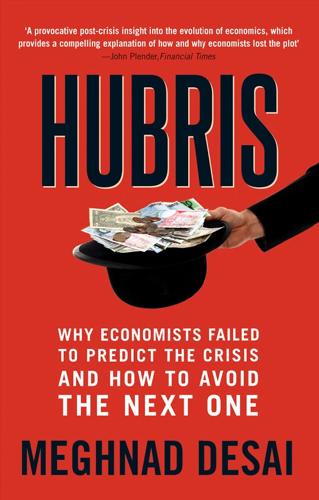
Hubris: Why Economists Failed to Predict the Crisis and How to Avoid the Next One
by
Meghnad Desai
Published 15 Feb 2015
Despite its ambition, the work failed to gain the attention Keynes had hoped for it. Keynes’s contemporary, Friedrich Hayek (1899–1992), was a brilliant free market economist. Trained in Vienna, he was steeped in the orthodoxy of Walrasian economics but also aware of Wicksell’s work. Along with Gunnar Myrdal (1898–1987), a socialist, who succeeded Gustav Cassel as professor at the University of Stockholm, he proposed an alternative approach. Later, Hayek and Myrdal, whose politics were poles apart, were to share the Nobel Prize in Economics in 1974 for “their pioneering work in the theory of money and economic fluctuations.”
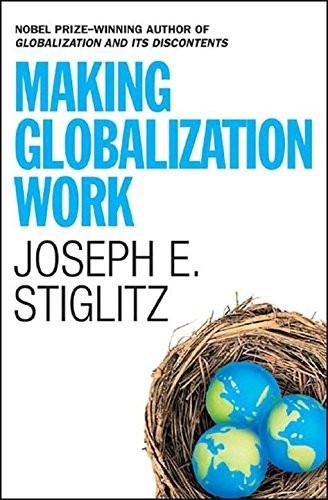
Making Globalization Work
by
Joseph E. Stiglitz
Published 16 Sep 2006
Nevertheless, the task has proven insurmountable almost everywhere outside of Asia—the most successful example of economic development the world has ever seen. Their success has been so strong—and they have been successful for so long—that it is easy to take it for granted. But Asia’s growth would have surprised many experts of the 1950s and 1960s, such as the Nobel Prize–winning economist Gunnar Myrdal, who assessed Asia’s prospects as truly bleak.4 Conventional wisdom then was that countries such as Korea should stick to what they were best at: growing rice. The East Asian miracle shows that rapid development—and growth with equity, in which the poor and the rich both benefit—is possible, even though no particular preconditions were in place.
…
My own work added to the list of situations in which market failures lead to inefficiency—where information was imperfect and/or asymmetric (that is, where some individuals know something that others do not). Arrow and Debreu’s analysis also assumed that technology was unchanging, or at least unaffected by actions of market participants; yet changes in technology are at the center of development. 4.Gunnar Myrdal, Asian Drama: An Inquiry into the Poverty of Nations (New York: Pantheon, 1968). 5.Its performance in the past fifteen years has been a little bit better—a measly annual increase in per capita income of 0.2 percent. 6.See World Bank, China 2020: Development Challenges in the New Century (Washington, DC: World Bank, 1997), p. 3; available at http://www-wds.world bank.org/servlet/WDSContentServer/WDSP/IB/1997/09/01/000009265_398 0625172933/Rendered/PDF/multi0page.pdf. 7.Since 1970, the total (average annual rate of ) increase in income per capita has been: China, 923 percent (6.8 percent); Indonesia, 286 percent (4.0 percent); Korea, 566 percent (5.6 percent); Malaysia, 283 percent (3.9 percent); Thailand, 347 percent (4.4 percent).
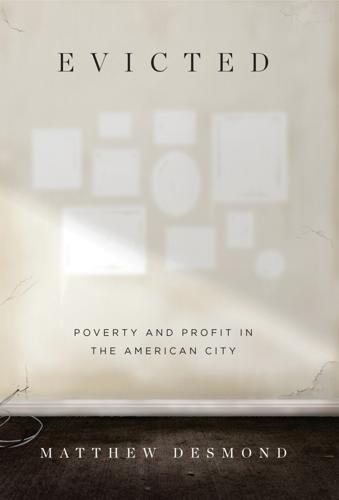
Evicted: Poverty and Profit in the American City
by
Matthew Desmond
Published 1 Mar 2016
“But if it is a question of taking a road past his property, he sees at once that this small public matter has a bearing on his greatest private interests.”2 It is only after we begin to see a street as our street, a public park as our park, a school as our school, that we can become engaged citizens, dedicating our time and resources for worthwhile causes: joining the Neighborhood Watch, volunteering to beautify a playground, or running for school board. Working on behalf of the common good is the engine of democracy, vital to our communities, cities, states—and, ultimately, the nation. It is “an outflow of the idealism and moralism of the American people,” wrote Gunnar Myrdal.3 Some have called this impulse “love of country” or “patriotism” or the “American spirit.” But whatever its name, its foundation is the home. What else is a nation but a patchwork of cities and towns; cities and towns a patchwork of neighborhoods; and neighborhoods a patchwork of homes? America is supposed to be a place where you can better yourself, your family, and your community.
…
EPILOGUE: HOME AND HOPE 1. Lewis Mumford, The City in History: Its Origins, Its Transformations, and Its Prospects (New York: MJF Books, 1961), 13; with special thanks to Rowan Flad and Shamus Khan for etymology insights. 2. Alexis de Tocqueville, Democracy in America (New York: Perennial Classics, 2000), 511. 3. Gunnar Myrdal, An American Dilemma, vol. 2, The Negro Social Structure (New York: McGraw-Hill Publishers, 1964 [1944]), 810. 4. Plato, The Republic (New York: Penguin Classics, 1987), 312. I have changed “men” to “people.” 5. Mary Schwartz and Ellen Wilson, Who Can Afford to Live in a Home? A Look at Data from the 2006 American Community Survey (Washington, DC: US Census Bureau, 2007). 6.

The Atlantic and Its Enemies: A History of the Cold War
by
Norman Stone
Published 15 Feb 2010
Chou En-lai now devoted his energies to the Western powers, persuading Mao that they could be far more useful than Mao had realized. Meanwhile, the Communist base was strengthened financially through sales of opium, grown on 30,000 acres in Yenan and marketed in part through a Nationalist general to the north. This at least allowed Mao to ease up on the exploitation of the peasants. Later on, another considerable expert, Gunnar Myrdal, was to observe a village in that area, and to offer wide-eyed praise at the ‘traditions’ being observed. Mao had the grace to burst out laughing. He meanwhile built up his party (it now had over 700,000 members) and many were well-educated volunteers from the Nationalist areas as they arrived (40,000 of them) in Yenan.
…
Michael Harrington discovered that there were many poor Americans: The Other America (1962). David Riesman looked at the American rat race in The Lonely Crowd (1961) and shook his head at the two-dimensional misery of it all. René Dumont considered international aid, and thought that there should be much more of it; Gunnar Myrdal saw American race relations in the same light. Germaine Greer wrote The Female Eunuch (1970) saying that for women life was a bitter picture from the cradle to the tomb. The answer was: spend money. Here, the presiding genius was Maynard Keynes. He had been contemptuous of the orthodox balance-the-budget financiers who had run things in the 1930s (and who were still running them in the 1950s): they reduced the National Debt and tried to run a budget surplus.
…
The question would have been accepted by any Communist in the 1930s: the peasants, Marx’s quadrupeds, would only accept progessive change if they were forced to. Modernization from the Left was a standard line, and was accepted very widely indeed. Since the Second World War a school of development economics had emerged, with the Swede Gunnar Myrdal in the lead, and its adepts were all around, whether in Africa or Latin America, arguing in effect that the peasantry and the small bourgeoisie should pay for heavy industrialization, courtesy of the State. But in 1976, by the time Mao Tsetung had died, that scheme of things looked much less promising.
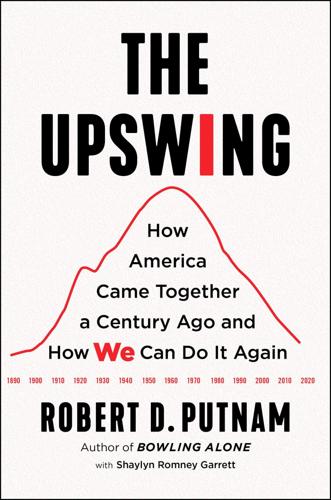
The Upswing: How America Came Together a Century Ago and How We Can Do It Again
by
Robert D. Putnam
Published 12 Oct 2020
He made good on that promise by establishing the President’s Committee on Civil Rights, which ultimately produced a 178-page report advocating sweeping reforms. As a result, Truman issued the long-awaited ban on segregation in the military.116 In 1944, after studying race relations at the behest of the Carnegie Foundation, Swedish economist Gunnar Myrdal published an unsparing account of white racism entitled An American Dilemma. The book’s emphatic message was that the time was ripe in America for an inevitable reckoning between the reality of discrimination and the “American Creed” of democratic equality. “Not since Reconstruction has there been more reason to anticipate fundamental changes in American race relations, changes which will involve a development toward American ideals,” Myrdal wrote, optimistically.117 The book was a best-seller and Myrdal’s analysis was well received by both African American and white intellectuals.
…
It was signed by leading researchers at the time in multiple academic disciplines. 115 Delton, Rethinking the 1950s, 97. 116 “Executive Order 9981: Establishing the President’s Committee on Equality of Treatment and Opportunity In the Armed Forces,” U.S. Equal Employment Opportunity Commission, accessed November 22, 2019, https://www.eeoc.gov/eeoc/history/35th/thelaw/eo-9981.html. 117 Gunnar Myrdal, An American Dilemma: The Negro Problem and Modern Democracy, 20th anniversary ed. (New York: Harper & Row, 1962), Preface, xviiii. 118 Patterson, Grand Expectations, 386–87. 119 DC Editorial, “Superman: A Classic Message Restored,” DC, August 25, 2017, https://www.dccomics.com/blog/2017/08/25/superman-a-classic-message-restored. 120 Patterson, Grand Expectations, 386–87. 121 Quoted in ibid., 413. 122 According to Patterson (ibid.), at the end of Eisenhower’s administration, only 28 percent of Southern blacks could vote.

The Socialist Manifesto: The Case for Radical Politics in an Era of Extreme Inequality
by
Bhaskar Sunkara
Published 1 Feb 2019
And even in a period with emergency wage, price, and consumption controls, planning had a great deal of mystique. Despite Wigforss’s assurances about the continued role of private capital, the 1944 program advocated government takeovers of basic industries and finance and an overarching state responsibility for shaping investment and maintaining full employment. Economist and trade minister Gunnar Myrdal spoke of a “harvest time” for the labor movement, in which the fruits of recent economic development would fall to workers. Yet a push for nationalization found resistance from a capitalist class that could credibly threaten to withhold investment. That climate, combined with the onset of the Cold War, tempered the SAP, which forsook alliance with the Communists in favor of a new coalition with the Agrarians.10 With the march toward socialization blocked, the party eventually adopted a 1951 plan created by LO economists Gösta Rehn and Rudolf Meidner.
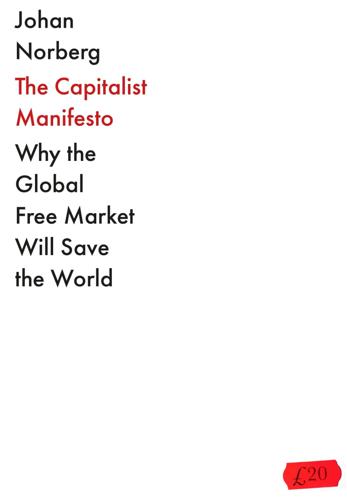
The Capitalist Manifesto
by
Johan Norberg
Published 14 Jun 2023
Speaking of Congo-Brazzaville, in most discussions of global development, sub-Saharan Africa is mentioned as some kind of a synonym for hopelessness. That was not always the case. In the 1960s, most African countries were richer and had higher growth than Asian countries, and were blessed with more natural resources. Economists such as Gunnar Myrdal believed more in Africa than Asia, where they worried that governments were not strong enough to push industrialization and Confucian attitudes were thought to block innovation and development. In 1967, the World Bank’s chief economist listed seven African economies that he thought could grow by more than 7 per cent annually.
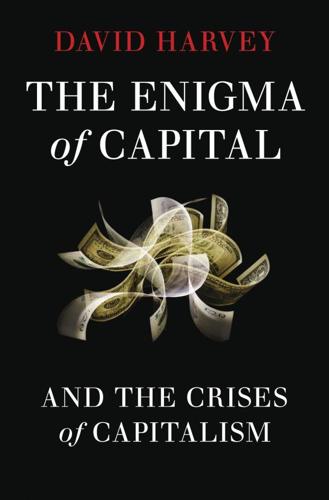
The Enigma of Capital: And the Crises of Capitalism
by
David Harvey
Published 1 Jan 2010
All of these elements tend to hang together within a geographical region in a mutually supportive way. If they do not cohere, then economic development within the region tends to languish. Regions that develop superior qualities become grand attractors for further capitalist activity. In this way, what the Swedish economist Gunnar Myrdal dubbed ‘circular and cumulative causation’ operates to make rich and successful regions ever more prosperous, while poorer regions stagnate or decline. Regional configurations in divisions of labour and of production systems are, in short, made by the conjoining of economic and political forces rather than dictated by so-called natural advantages.
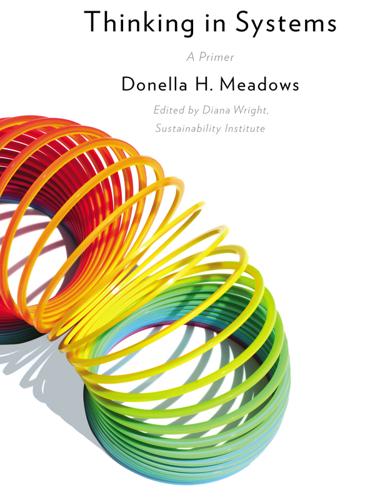
Thinking in Systems: A Primer
by
Meadows. Donella
and
Diana Wright
Published 3 Dec 2008
I express my admiration and gratitude to all its members. I also have drawn from thinkers in a variety of disciplines, who, as far as I know, never used a computer to simulate a system, but who are natural systems thinkers. They include Gregory Bateson, Kenneth Boulding, Herman Daly, Albert Einstein, Garrett Hardin, Václav Havel, Lewis Mumford, Gunnar Myrdal, E.F. Schumacher, a number of modern corporate executives, and many anonymous sources of ancient wisdom, from Native Americans to the Sufis of the Middle East. Strange bedfellows, but systems thinking transcends disciplines and cultures and, when it is done right, it overarches history as well.

Progress: Ten Reasons to Look Forward to the Future
by
Johan Norberg
Published 31 Aug 2016
In the 1960s and 1970s the Swedish author Lasse Berg and the photographer Stig Karlsson visited several Asian countries, documenting misery and warning about impending disaster. They had read what the experts had written about a hopeless continent, where they expected to find overpopulation, endless war and famines. They had learned from the economist Gunnar Myrdal, the authority on Asia in those days, that China was too chaotic to function, Malaysia had too much ethnic division and the South Koreans did not have a work ethic because of their religion. Berg and Karlsson saw what they expected to see, and thought that the worst was yet to come: ‘Doomsday was approaching, in one way or the other.’11 But in the 1990s they returned to the same places and villages and found a continent of hope.
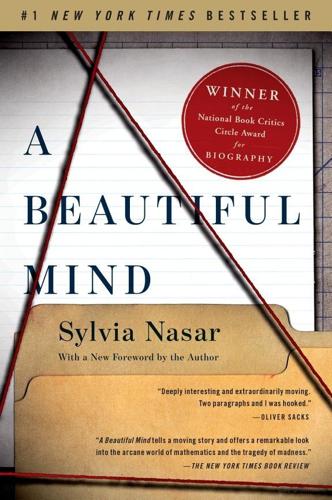
A Beautiful Mind
by
Sylvia Nasar
Published 11 Jun 1998
The prize is financed by the bank and administered by the Royal Swedish Academy of Sciences and the Nobel Foundation. It is not, in fact, a Nobel Prize, but rather “The Central Bank of Sweden Prize in Economic Science in Memory of Alfred Nobel.” To the public, that is a distinction without much of a difference. The early winners of the economics prize — among them Paul Samuelson, Kenneth Arrow, and Gunnar Myrdal — were generally acknowledged to be intellectual giants and lent their distinction to the prize. And, so far at least, it has become “the ultimate symbol of excellence for scientists and laymen alike” and does in fact make economics Nobel-ists “life peers in the world community of scholars.”10 The criteria, rules, and procedures for the economics prize are patterned after those that apply to the science prizes.11 Candidates must be living.
…
Top academic economists in Sweden, where academia, government, and industry have long been closely entwined, have traditionally wielded a great deal more political power than their American counterparts.16 Bertil Ohlin, the committee’s first chairman, was for years the leader of Sweden’s opposition. Gunnar Myrdal, who won the prize in 1974, was a minister in the Social Democratic government. Lindbeck himself was a protégé of Prime Minister Olof Palme, has held many political advisory posts, and has been involved in most public policy debates since the 1960s. Unlike Ohlin and Myrdal, Lindbeck never abandoned his research career to become a full-time politician.
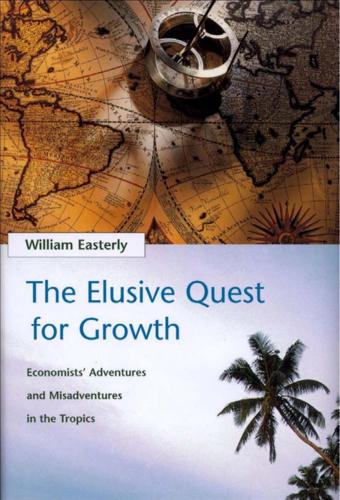
The Elusive Quest for Growth: Economists' Adventures and Misadventures in the Tropics
by
William R. Easterly
Published 1 Aug 2002
Hollis Chenery and Alan Strout wrote in the early 1960s that growth in India would exceed growth in Korea between 1962 and 1976. As it turned out, Korea grew three times faster than India over this period. Anotherdevelopmenteconomist in the early 1960s ranked East Asia below sub-Saharan Africa on “economic culture” and ”population pressure.” The economist Gunnar Myrdal fretted about future superstarSingapore’s ”potentially explosive problems,” including rapid population growth, which would lead to ”a mounting unemployment burden.”16 All that turned out to be explosively mounting in Singapore was GDP. Under an Evil Star 207 In Search of Excellence This failure to appreciate mean reversion in economicsis true at scales other than countries.

Rise of the Robots: Technology and the Threat of a Jobless Future
by
Martin Ford
Published 4 May 2015
And there is still the voice crying through the vista of time saying, “Behold, I make all things new; former things are passed away.”2 The phrase “triple revolution” referred to a report written by a group of prominent academics, journalists, and technologists that called itself the Ad Hoc Committee on the Triple Revolution. The group included Nobel laureate chemist Linus Pauling as well as economist Gunnar Myrdal, who would be awarded the Nobel Prize in economics, along with Friedrich Hayek, in 1974. Two of the revolutionary forces identified in the report—nuclear weapons and the civil rights movement—are indelibly woven into the historical narrative of the 1960s. The third revolution, which comprised the bulk of the document’s text, has largely been forgotten.
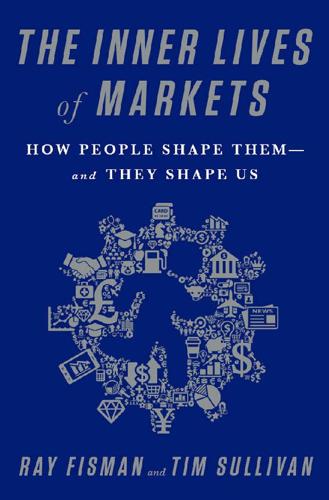
The Inner Lives of Markets: How People Shape Them—And They Shape Us
by
Tim Sullivan
Published 6 Jun 2016
One notable exception who continues to have an outsized influence was Friedrich Hayek, an Austrian-born economist who took up a post at the London School of Economics in 1931. Hayek was as much a social theorist and political philosopher as an economist. Despite his reliance on narrative argument over mathematical proof, he won the Nobel Prize, with Gunnar Myrdal, in 1974, for his “penetrating analysis of the interdependence of economic, social and institutional phenomena.” Hayek died in 1992. Others who also followed in the “more words than math” school include Albert Hirschman and Arthur Lewis. 9. Joseph Schumpeter, Theory of Economic Development (Cambridge, MA: Harvard University Press, 1949). 10.
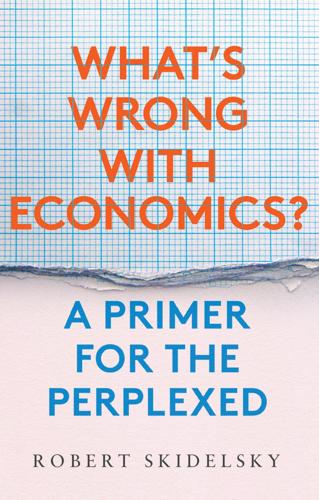
What's Wrong With Economics: A Primer for the Perplexed
by
Robert Skidelsky
Published 3 Mar 2020
Uncertainty is key to generating such equilibria, with a fall in investment prospects producing a flight to liquidity rather than a fall in interest rates. There has always been a debate about whether a Keynesian equilibrium is anything more than a short-period phenomenon. Economists in the Keynesian tradition, including Nicholas Kaldor (1908–1986), Gunnar Myrdal (1899–1987), George Shackle (1903–1992), Giovanni Dosi (b.1953), as well as many in the Austrian school, such as Ludwig Lachmann (1906–1990), have tried to break out of the straitjacket of equilibrium. Innovation is a fertile field for dynamic analysis. One can’t know in advance about the effects of innovation because it hasn’t yet happened.
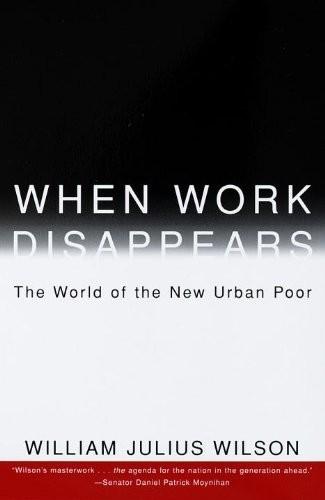
When Work Disappears: The World of the New Urban Poor
by
William Julius Wilson
Published 1 Jan 1996
Behind its crumbling walls lives a large group of people who are more intractable, more socially alien and more hostile than almost anyone had imagined. They are the unreachables: the American underclass.” The Time article pointed out that the concept of “underclass,” first used in “class-ridden Europe,” was “applied to the U.S. by Swedish economist Gunnar Myrdal and other intellectuals in the 1960s” and “has become a rather common description of people who are seen to be stuck more or less permanently at the bottom, removed from the American dream.” The article goes on to state: Though its members come from all races and live in many places, the underclass is made up mostly of impoverished urban blacks, who still suffer from the heritage of slavery and discrimination.… Their bleak environment nurtures values that are often at radical odds with those of the majority—even the majority of the poor.
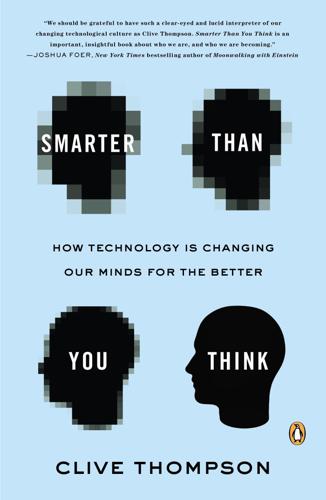
Smarter Than You Think: How Technology Is Changing Our Minds for the Better
by
Clive Thompson
Published 11 Sep 2013
The people most likely to lie—those living in liberal northern areas—also had the lowest rates of false beliefs.) This same dynamic, O’Gorman argued, helped explain why blacks couldn’t get hired: Even when white employers did not think of themselves as racist, they believed their customers were—so they went along with the crowd, or at least the crowd they imagined existed. O’Gorman quoted the economist Gunnar Myrdal’s interviews with white employers: “I have been told time and time again that they have nothing against employing Negroes, and I believe they are telling the truth. What holds them back are the considerations they have to take about the attitudes of customers and co-workers.” The same dynamic even appeared to govern playdates of children.
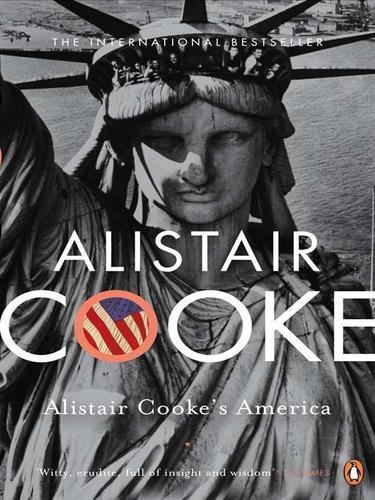
Alistair Cooke's America
by
Alistair Cooke
Published 1 Oct 2008
It is a bitterly, and sometimes rousingly, complicated place, this land thrashing over such incessant contradictions as control and permissiveness, the radical young and the conservative middle, the limitlessness of civil rights and the limitations of presidential power. The Swedish sociologist Gunnar Myrdal helped make sense of the constant commotion with his remark to the effect that, while the American tradition is a conservative one, what it has struggled to conserve are often very radical principles indeed. A still more timely reminder that the government of a free people is meant to be argued about comes from the most famous of American jurists.
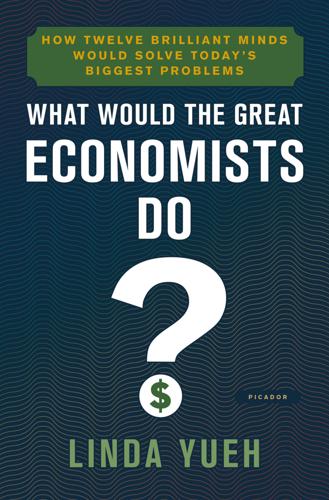
What Would the Great Economists Do?: How Twelve Brilliant Minds Would Solve Today's Biggest Problems
by
Linda Yueh
Published 4 Jun 2018
One of the reasons it took so long to write is that between 1969 and 1974 his progress had been interrupted by ill health and depression. However, two events were to revitalize him. The Nobel Prize in economics had been established in 1969. It was rumoured that the committee were keen to award the prize to Gunnar Myrdal, one of the pioneers of the Swedish welfare state, but it had been specified at inception that no Swede could win in the first five years. The sixth year was 1974, and Myrdal duly received the award that year. However, the prize was shared with Hayek. Both economists were reportedly surprised, Hayek because he had won; Myrdal because he had to share the award.18 Hayek had not considered himself a contender because his work in technical economics was too far in the past.
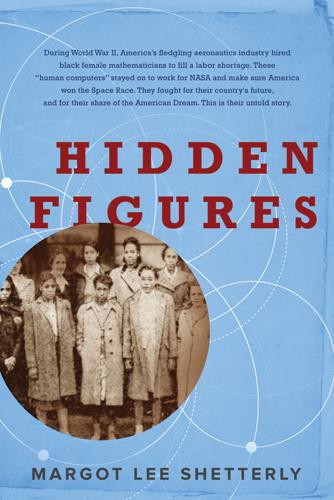
Hidden Figures
by
Margot Lee Shetterly
Published 11 Aug 2016
McClurg and Co., 1903). 109 the American dilemma: In 1944, the Carnegie Foundation funded a groundbreaking, comprehensive report on the state of black America, entitled An American Dilemma: The Negro Problem and Modern Democracy (New York: The MacMillan Company, 1946). Its author, Swedish economist Gunnar Myrdal, pointed out the brutal circularity of a system that discriminated against blacks in virtually every aspect of their lives, then excoriated them when they failed to meet the marks set by whites. 109 answered Czarnecki’s greeting with a Mach 2 blowdown: Stradling, “Retired Engineer Remembers Segregated Langley.” 110 “Why don’t you come work for me?”

Twilight of the Elites: America After Meritocracy
by
Chris Hayes
Published 11 Jun 2012
The concentration of the media at that moment, in other words, provided activists with an Archimedean point of leverage: They could focus their energies on a relative handful of press outlets and through these outlets broadcast their message to almost every last member of the voting public. In some ways, the story told in The Race Beat bears out Julian Assange’s simple vision: The truth of the nature of segregation was exposed and the truth won. Roberts and Klibanoff quote Swedish economist Gunnar Myrdal, who prophetically observed in his 1944 book that “there is no doubt that a great majority of white people in America would be prepared to give the Negro a substantially better deal if they knew the facts.” But key to this “truth” getting out was the concentrated authority that the establishment press at the time, particularly the New York Times, possessed.
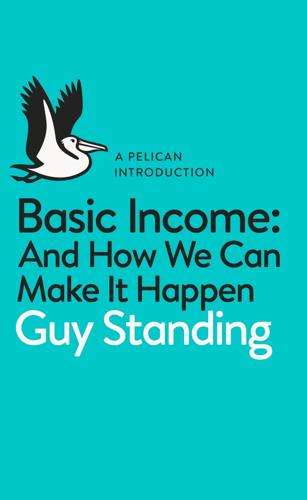
A Pelican Introduction: Basic Income
by
Guy Standing
Published 3 May 2017
The dignity of the individual will flourish when the decisions concerning his life are in his own hands, when he has the assurance that his income is stable and certain, and when he knows that he has the means to seek self-improvement.9 There were many other advocates around this time, though most seem to have supported a means-tested guaranteed minimum income. They included a string of Nobel Prize-winning economists – James Meade, Friedrich Hayek, Milton Friedman, Jan Tinbergen, James Tobin, Paul Samuelson and Gunnar Myrdal. The idea was also supported by other prominent economists, such as J. K. Galbraith, and by sociologists, most notably New York Senator Daniel Patrick Moynihan, who, although a Democrat, had a strong influence on Nixon’s proposed Family Assistance Plan.10 The fourth wave could be said to have started in a quiet way with the establishment of the Basic Income European (now Earth) Network (BIEN) in 1986.
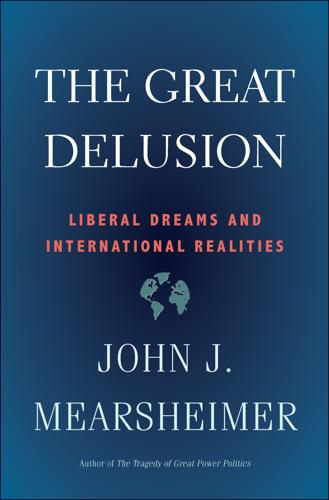
The Great Delusion: Liberal Dreams and International Realities
by
John J. Mearsheimer
Published 24 Sep 2018
He maintains that the United States was born a liberal country and never had a feudal tradition, unlike its European counterparts. Lacking a significant political right or left, it has instead veered toward an illiberal liberalism. But Hartz says little about American nationalism. In this he follows in the footsteps of Alexis de Tocqueville and Gunnar Myrdal, who also wrote important books on American identity that largely ignore nationalism.80 This was a “misleading orthodoxy,” as Rogers Smith points out in his important book Civic Ideals.81 American identity does not revolve only around liberalism, as Hartz seemed to think, but is inextricably bound up with nationalism.
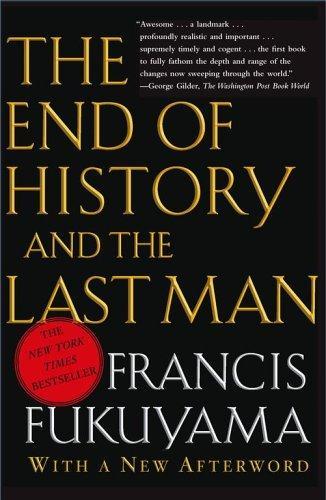
The end of history and the last man
by
Francis Fukuyama
Published 28 Feb 2006
The blight of caste is not only untouchability and the consequent deification in India of filth; the blight, in an India that tries to grow, is also the over-all obedience it imposes, its ready-made satisfactions, the diminishing of adventuresomeness, the pushing away from men of individuality and the possibility of excellence.14 Gunnar Myrdal, in his great study of South Asian poverty, was left to conclude that overall, Indian religion constituted “a tremendous force for social inertia,” and nowhere acted as a positive agent for change in the way that Calvinism or Jodo Shinshu did.15 With examples like the Hindu sanctification of poverty in mind, most social scientists have assumed that religion was one of those aspects of “traditional culture” that would decline under the impact of industrialization.
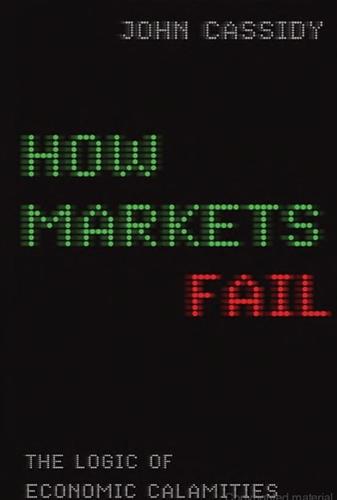
How Markets Fail: The Logic of Economic Calamities
by
John Cassidy
Published 10 Nov 2009
When I began studying economics at Oxford during the early eighties, Hayek was widely seen as a right-wing nut. True, he had received the Nobel Memorial Prize in 1974, but that was viewed within the economics profession as a political sop, with Hayek’s name added to balance that of his co-winner, Gunnar Myrdal, a left-wing Swedish economist. (Myrdal later said that he wouldn’t have accepted the award if he had known he would have to share it with Hayek.) Hayek’s proposals to emasculate the trade unions and privatize the money supply seemed outlandish: he was regarded more as a libertarian political philosopher than a practical economist.

Vertical: The City From Satellites to Bunkers
by
Stephen Graham
Published 8 Nov 2016
Long-standing traditions of demonising the inhabitants of basements – or using the idea of basements pejoratively as social metaphor or allegory – find their counterparts in the way many discussions of the social, political or cultural ‘underworlds’ and ‘undergrounds’ of cities also gravitate to various forms of ‘basements’ terminology. In 1965, for example, Swedish sociologist Gunnar Myrdal coined the controversial term ‘underclass’ by directly invoking the allegory of the basement and the ‘basement class’ as the lowest of the low within a broader society. In a notorious book filled with clashing vertical metaphors and allegories, Myrdal argued that there was ‘an ugly smell rising from the basement of the stately mansion.’
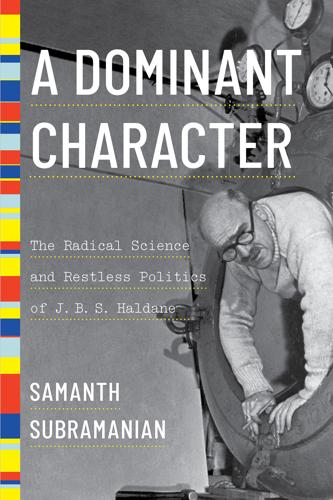
A Dominant Character
by
Samanth Subramanian
Published 27 Apr 2020
And ISI received dozens of such visitors. Many of them came because of Mahalanobis’s energy, his mania for inviting the best minds in the world to his corner of eastern India. (Or even those not quite among the best. “Every second-rate economist from Europe or America” must have come to ISI in the 1950s, the Swedish economist Gunnar Myrdal declared.) But many also came because in the years after India became free, the institute turned into a regular waystation for the politicians who came to court this new nation. Lyndon Johnson made the trip; so did Alexei Kosygin, Che Guevara, Ho Chi Minh, Henry Kissinger, and Zhou Enlai. For Nehru, the institute sat at the focus of his centralized plan to build his country.
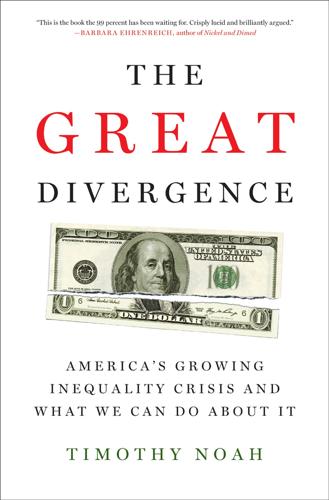
The Great Divergence: America's Growing Inequality Crisis and What We Can Do About It
by
Timothy Noah
Published 23 Apr 2012
Computers were designed to perform cognitive tasks. (Think of Jeopardy champion Ken Jennings’s nemesis, IBM’s Watson.) Theoretically, there was no limit to the kinds of work computers might eventually perform. In 1964 several eminent intellectuals, including the past and future Nobel laureates Linus Pauling and Gunnar Myrdal, wrote President Lyndon Johnson to warn him about “a system of almost unlimited productive capacity which requires progressively less human labor.” Such a dystopia may yet one day emerge. But thus far traditional economic theory is holding up reasonably well.7 Computers are eliminating jobs, but they’re also creating jobs.
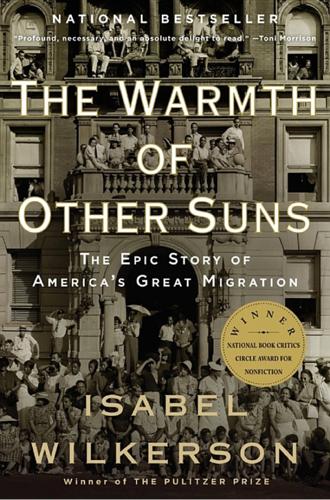
The Warmth of Other Suns: The Epic Story of America's Great Migration
by
Isabel Wilkerson
Published 6 Sep 2010
The unequal living conditions produced the expected unequal results: blacks working long hours for overpriced flats, their children left unsupervised and open to gangs, the resulting rise in crime and drugs, with few people able to get out and the problems so complex as to make it impossible to identify a single cause or solution. King was running headlong into what the sociologist Gunnar Myrdal called the Northern Paradox. In the North, Myrdal wrote, “almost everybody is against discrimination in general, but, at the same time, almost everybody practices discrimination in his own personal affairs”—that is, by not allowing blacks into unions or clubhouses, certain jobs, and white neighborhoods, indeed, avoiding social interaction overall.186 “It is the culmination of all these personal discriminations,” he continued, “which creates the color bar in the North, and, for the Negro, causes unusually severe unemployment, crowded housing conditions, crime and vice.
…
REVOLUTIONS 184 I can conceive: James Baldwin, Notes of a Native Son (Boston: Beacon Press, 1955), p. 59. 185 “Negroes have continued”: James R. Ralph, Jr., Northern Protest: Martin Luther King Jr., Chicago and the Civil Rights Movement (Cambridge, Mass.: Harvard University Press, 1993), p. 35. 186 “almost everybody is against”: Gunnar Myrdal, An American Dilemma: The Negro Problem and Modern Democracy, vol. 2 (New York: Harper and Brothers, 1944), p. 1010. 187 “So long as this city”: “White and Black in Chicago,” Chicago Tribune, August 3, 1919, p. F6. The editorial also said, “We admit frankly that if political equality had meant the election of Negro mayors, judges, and a majority of the city council, the whites would not have tolerated it.
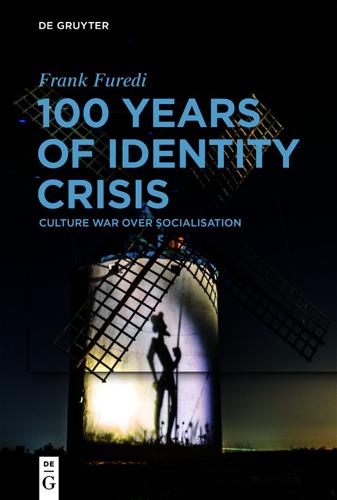
100 Years of Identity Crisis: Culture War Over Socialisation
by
Frank Furedi
Published 6 Sep 2021
Gaining control over the socialisation of the young was the ambition of many professionals. This goal was most forcefully pursued by Social Democratic governments in Sweden, which from the 1930s onwards sought to turn socialisation into a responsibility of the state. The Swedish social scientist Gunnar Myrdal, and his partner, the politician and social scientist Alva Myrdal, developed a social democratic, social engineering paradigm that sought not only to direct the socialisation of young people but also to use children to assist the project of re-socialising their parents. Their objective was to create a universal system of nurseries and after-school care to facilitate the realisation of their objective of neutralising the influence of parents over their children.

How to Change the World: Reflections on Marx and Marxism
by
Eric Hobsbawm
Published 5 Sep 2011
This was perhaps least marked in economics, where Marxists had always been peripheral, though among the first ten Nobel laureates in this field there were three who were formed or partly formed in the early years of the Soviet Union or who were still active there (Wassily Leontief, Simon Kuznets, Leonid Kantorovitch). However, from 1974, when Friedrich von Hayek received the prize, still balanced by his ideological opposite, the Swede Gunnar Myrdal, and 1976, when it was given to Milton Friedman, it became markedly identified with a sharp turn away from Keynesian and other interventionist theories and a return to an increasingly uncompromising laissez-faire. Cracks in this prevailing consensus did not begin to appear until the late l990s.
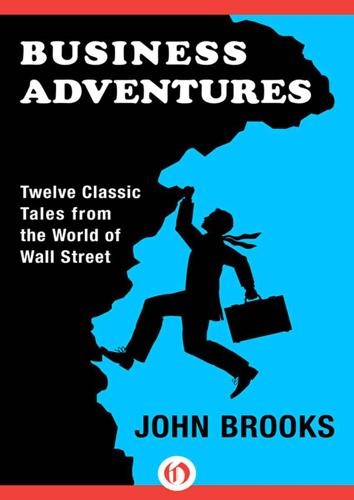
Business Adventures: Twelve Classic Tales From the World of Wall Street
by
John Brooks
Published 6 Jul 2014
Now the offers were coming so fast that little attempt was made to disguise their places of origin; it was evident that they were coming from everywhere—chiefly from the financial centers of Europe, but also from New York, and even from London itself. Rumors of imminent devaluation were sweeping the bourses of the Continent. And in London itself an ominous sign of cracking morale appeared: devaluation was now being mentioned openly even there. The Swedish economist and sociologist Gunnar Myrdal, in a luncheon speech in London on Thursday, had suggested that a slight devaluation might now be the only possible solution to Britain’s problems; once this exogenous comment had broken the ice, Britons also began using the dread word, and, in the next morning’s Times, Our City Editor himself was to say, in the tone of a commander preparing the garrison for possible surrender, “Indiscriminate gossip about devaluation of the pound can do harm.
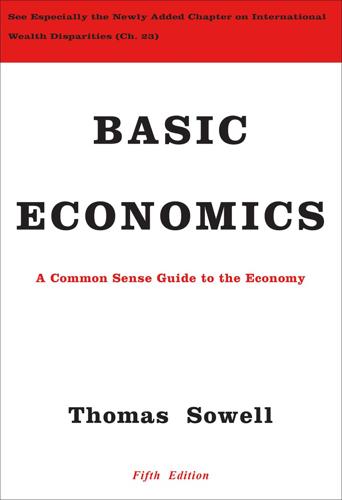
Basic Economics
by
Thomas Sowell
Published 1 Jan 2000
{523} Michael Cabanatuan, “Bay Bridge Pause Cost $81 Million,” San Francisco Chronicle, December 8, 2005, p. B1. {524} Caroline E. Mayer, “Personal Bankruptcy Filings Fall Sharply,” Washington Post, November 22, 2005, p. D3. {525} Melvyn B. Krauss, Development Without Aid (New York: The Free Press, 1983), p. 30. {526} Gunnar Myrdal, Asian Drama: An Inquiry into the Poverty of Nations (New York: Pantheon, 1968), Volume II, p. 832. {527} Nicholas D. Kristof and Sheryl WuDunn, Thunder from the East (New York: Knopf, 2000), p. 257. {528} Rose Brady, Kapitalizm: Russia’s Struggle to Free Its Economy (New Haven: Yale University Press, 1999), p. 7
…
{954} The Urban Institute, The NonProfit Sector in Brief: Public Charities, Giving, and Volunteering, 2013 (Washington: Urban Institute, 2013), p. 2. {955} Peter Hitchens, The Abolition of Britain (San Francisco: Encounter Books, 2000), p. 111. {956} Adam Smith, An Inquiry into the Nature and Causes of the Wealth of Nations (New York: Modern Library, 1937), p. 718. {957} Gunnar Myrdal, An American Dilemma: The Negro Problem & Modern Democracy (New York: Harper & Brothers, 1944), Volume I, p. 323; Harold J. Laski, The American Democracy (New York: Viking Press, 1948), p. 480. {958} “Talented Black Scholars Whom No White University Would Hire,” Journal of Blacks in Higher Education, Winter 2003–2004, pp. 110–115
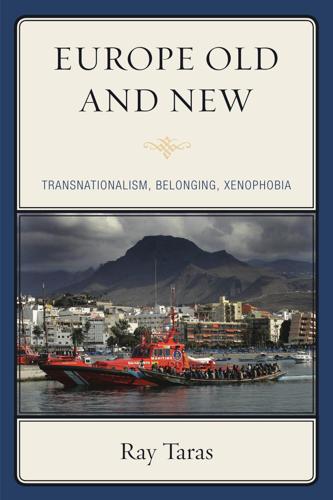
Europe old and new: transnationalism, belonging, xenophobia
by
Ray Taras
Published 15 Dec 2009
This is why the simple people loved them.60 EVEN IN SCANDINAVIA? World-systems theory argues that global capitalism produces similar patterns of social development in whichever countries it touches. André Gunder-Frank, Immanuel Wallerstein, and to some extent Swedish academics like Gösta Esping-Andersen and Gunnar Myrdal have accepted this logic. Sweden has always seemed to be different in Europe. It is one of the rare countries that has no national holiday to celebrate. It is among the highestranked states in the world in a number of key indicators of “progressiveness”: quality of life, human development, postmaterialist values, empowerment of women, absence of corruption, and environmental regulation.
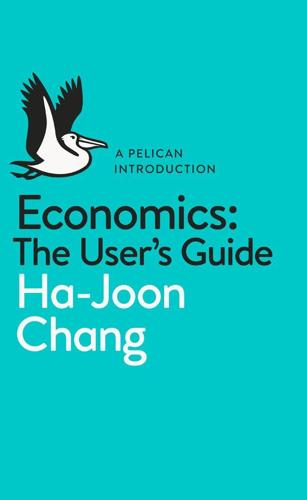
A Pelican Introduction Economics: A User's Guide
by
Ha-Joon Chang
Published 26 May 2014
.* The school emphasized the importance of understanding the history of how the material production system has changed, both influencing and influenced by law and other social institutions.12 The Developmentalist tradition in the modern world: Development Economics The Developmentalist tradition was advanced in its modern form in the 1950s and the 1960s by economists such as, in alphabetical order, Albert Hirschman (1915–2012), Simon Kuznets (1901–85), Arthur Lewis (1915–91) and Gunnar Myrdal (1899–87) – this time, under the rubric of Development Economics. Writing mostly about the countries on the periphery of capitalism in Asia, Africa and Latin America, they and their followers not only refined the earlier Developmentalist theories but also added quite a lot of new theoretical innovations.

Age of Anger: A History of the Present
by
Pankaj Mishra
Published 26 Jan 2017
Irvine, The Boulanger Affair Reconsidered: Royalism, Boulangism, and the Origins of the Radical Right in France (New York, 1989), is a fascinating guide to the promptings of fascism in late nineteenth-century France. Carol A. Horton, Race and the Making of American Liberalism (New York, 2005), offers an insightful account of anti-immigration solidarity in the United States. It is worth returning to the original contention that racism could be a form of democracy: Gunnar Myrdal, An American Dilemma: The Negro Problem and Modern Democracy, 2 vols (New York, 1944). On Tocqueville and Algeria, see Alexis de Tocqueville: Writings on Empire and Slavery, ed. and trans. Jennifer Pitts (Baltimore, 2003). Marinetti’s pronouncements can be sampled in F. T. Marinetti: Critical Writings, ed.
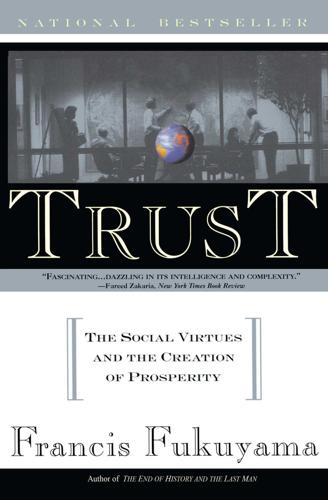
Trust: The Social Virtue and the Creation of Prosperity
by
Francis Fukuyama
Published 1 Jan 1995
LANGUAGES OF GOOD AND EVIL 1Clifford Geertz, The Interpretation of Cultures (New York: Basic Books, 1973), pp. 4-5. 2Ian Jamieson, Capitalism and Culture: A Comparative Analysis of British and American Manufacturing Organizations (London: Gower, 1980), p. 9. 3Geertz in fact goes further than this and asserts that there is no such thing as “human nature,” that is, a set of characteristics common to all human beings. He argues that human beings developed cultures before they had stopped evolving biologically, so what human beings are “by nature” is in good measure determined by the cultures they adopt. Geertz (1973), pp. 34-35; 49. 4Geertz (1973), p. 89. 5For a discussion of cows in India, see Gunnar Myrdal, Asian Drama: An Inquiry into the Poverty of Nations (New York: Twentieth Century Fund, 1968), 1: 89-91. 6Nichomachean Ethics Book II i.8. Aristotle explains that for people to be truly virtuous, they must habituate themselves to virtuous behavior such that it becomes a kind of second nature that is pleasurable in itself, or if not pleasurable something that the virtuous man takes pride in.
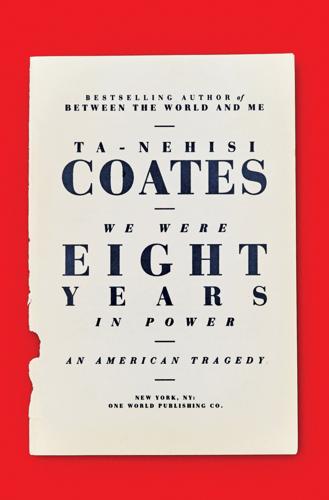
We Were Eight Years in Power: An American Tragedy
by
Ta-Nehisi Coates
Published 2 Oct 2017
As much as African Americans complained of violence perpetrated by white terrorists, the lack of legal protection from everyday neighbor-on-neighbor violence was never then, and has never been, far from their minds. “Law-abiding Negroes point out that there are criminal and treacherous Negroes who secure immunity from punishment because they are fawning and submissive toward whites,” observed the Nobel Prize–winning economist Gunnar Myrdal in his famous 1944 book about race in America, An American Dilemma: The Negro Problem and Modern Democracy. “Such persons are a danger to the Negro community. Leniency toward Negro defendants in cases involving crimes against other Negroes is thus actually a form of discrimination.” Crime within the black community was primarily seen as a black problem, and became a societal problem mainly when it seemed to threaten the white population.
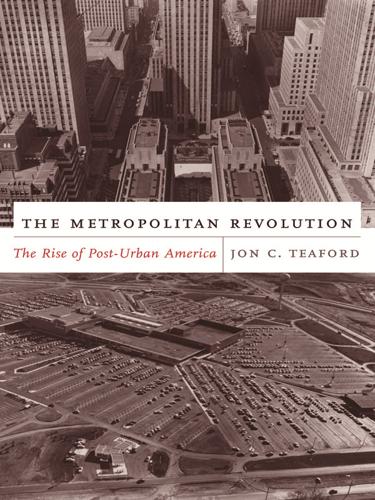
The Metropolitan Revolution: The Rise of Post-Urban America
by
Jon C. Teaford
Published 1 Jan 2006
On the West Coast, where the black population had been relatively small before the war, the rise was even more spectacular. The number of African Americans rose 78 percent in Los Angeles, 227 percent in the San Francisco Bay area, and 438 percent in metropolitan Portland.36 In 1944 the Swedish social scientist Gunnar Myrdal titled his study of race in the United States The American Dilemma. At the close of World War II, it was becoming more specifically an urban dilemma. The move to the city, however, did not free African Americans from the long-standing restraints of racial segregation and discrimination. In southern cities, they were required to sit at the back of streetcars and buses, the front being reserved for whites.

The Evolution of Everything: How New Ideas Emerge
by
Matt Ridley
The disagreement is around whether aid can remedy poverty, rather than merely respond to crises. Giving money to poor people is not a sustainable solution to poverty. So how do you help poor people? Do you instruct, plan and order their lives with expertise and lots of government, or do you get them freedom to exchange and specialise, so that prosperity can evolve? Friedrich Hayek and Gunnar Myrdal shared the Nobel Prize in Economics in 1974 for answering this question in opposite ways. Hayek thought that individual rights and freedoms were the means by which societies escaped from poverty. Myrdal thought development would be ‘largely ineffective’ without ‘regulations backed by compulsion’, because a ‘largely illiterate and apathetic citizenry’ would achieve nothing without government direction.
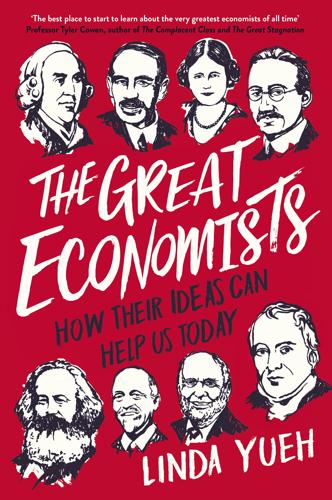
The Great Economists: How Their Ideas Can Help Us Today
by
Linda Yueh
Published 15 Mar 2018
One of the reasons it took so long to write is that between 1969 and 1974 his progress had been interrupted by ill health and depression. However, two events were to revitalize him. The Nobel Prize in economics had been established in 1969. It was rumoured that the committee were keen to award the prize to Gunnar Myrdal, one of the pioneers of the Swedish welfare state, but it had been specified at inception that no Swede could win in the first five years. The sixth year was 1974, and Myrdal duly received the award that year. However, the prize was shared with Hayek. Both economists were reportedly surprised, Hayek because he had won; Myrdal because he had to share the award.18 Hayek had not considered himself a contender because his work in technical economics was too far in the past.

Machines of Loving Grace: The Quest for Common Ground Between Humans and Robots
by
John Markoff
Published 24 Aug 2015
Pressure came in part from the Left in the form of an open letter to the president from a group that called itself the Ad Hoc Committee on the Triple Revolution, including Democratic Socialists of America head Michael Harrington, Students for a Democratic Society cofounder Tom Hayden, biologist Linus Pauling, Swedish economist Gunnar Myrdal, pacifist A. J. Muste, economic historian Robert Heilbroner, social critic Irving Howe, civil rights activist Bayard Rustin, and Socialist Party presidential candidate Norman Thomas, among many others. The first revolution they noted was the emergence of the “Cybernation”: “A new era of production has begun.
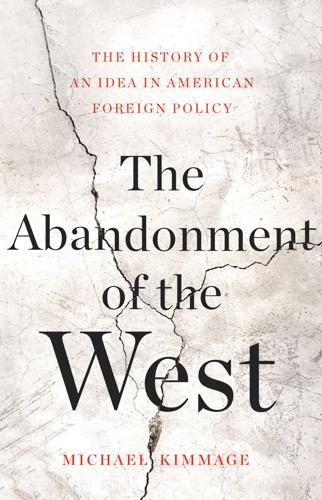
The Abandonment of the West
by
Michael Kimmage
Published 21 Apr 2020
In 1937, Bunche joined the Council on African Affairs, an organization founded by the activist Max Yergan to lobby the US government on workers’ rights and independence movements in Africa. W. E. B. Du Bois, the activist and performer Paul Robeson and the politician Adam Clayton Powell were fellow members of the council. An Africa analyst for the Office of Strategic Services during World War II, Bunche worked with the Swedish sociologist Gunnar Myrdal on An American Dilemma (1944), a widely read sociological study of race and racism and a scholarly boost to the civil rights movement.6 Bunche put parts of Locke’s new foreign policy into practice. He became the US ambassador to the United Nations in 1950, reviving a tradition of African American diplomatic distinction from the Civil War to the First World War that the astringent racial dynamics of the 1920s had derailed.
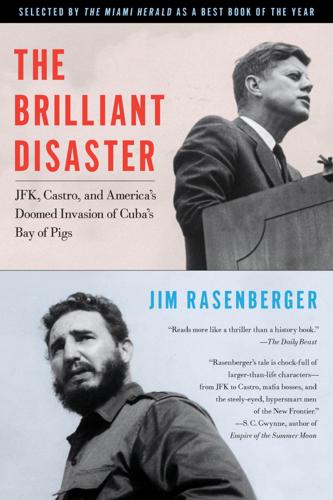
The Brilliant Disaster: JFK, Castro, and America's Doomed Invasion of Cuba's Bay of Pigs
by
Jim Rasenberger
Published 4 Apr 2011
Canceling the operation would have exposed him to enormous political risks. At the same time, approving the use of military force to bail it out would have exposed him and the country to unacceptable diplomatic risks, and possibly worse. Walt Rostow later recounted a conversation he had with Swedish economist and future Nobel Laureate Gunnar Myrdal, who happened to be in Washington the spring after the Bay of Pigs. Myrdal told Rostow he worked for a “great president.” When Rostow asked him why, he responded, “If Kennedy had called it off, he would have been ruined politically at home.… But if he had engaged American forces to salvage a failing covert operation, he would have been ruined abroad.”

Culture and Prosperity: The Truth About Markets - Why Some Nations Are Rich but Most Remain Poor
by
John Kay
Published 24 May 2004
Meade UK 1977 Trade theory Robert C. Merton USA 1997 Finance theory Merton H. Miller USA 1990 Finance theory James A. Mirrlees UK 1996 Asymmetric information Franco Modigliani USA 1985 Macroeconomics and finance theory Robert A. Mundell Canada 1999 Exchange rates and currency areas Gunnar Myrdal Sweden 1974 Economic systems John F. Nash Jr. USA 1994 Game theory Douglass C. North USA 1993 Application of economic theory to economic history Bertil Ohlin Sweden 1977 Trade theory Paul A. Samuelson USA 1970 "For the scientific work through which he has developed static and dynamic economic theory and actively contributed to raising the level of analysis in economic science."
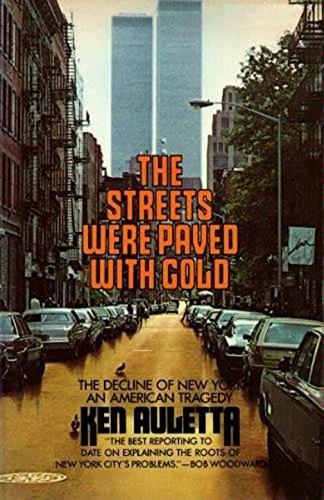
The Streets Were Paved With Gold
by
Ken Auletta
Published 14 Jul 1980
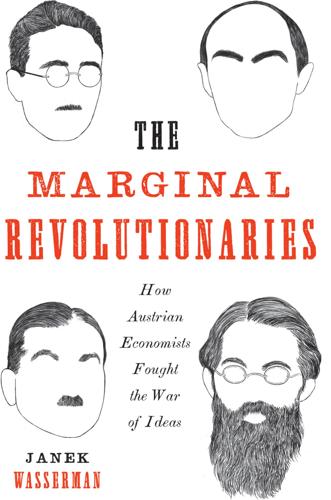
The Marginal Revolutionaries: How Austrian Economists Fought the War of Ideas
by
Janek Wasserman
Published 23 Sep 2019
The Nobel rescued his reputation from desuetude. For Hayek, the prize money freed him from a dependence on the welfare state for costly medical treatment and lifted his spirits in a time of despair. Given the surprising conferral, reactions were intense. His fellow recipient, the Swedish theorist Gunnar Myrdal, believed the Hayek award demeaned the prize. It pointed to the partisan tendencies of the key figure on the selection committee, Assar Lindbeck, a staunch opponent of social democracy and an advocate of Hayek’s philosophy. Lindbeck’s intervention on the Nobel committee ushered in a more ideological phase in the prize’s history, during which neoliberal economists, many associated with the MPS, received a large number of the prizes.
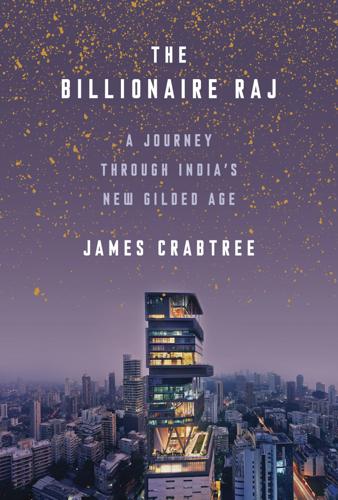
The Billionaire Raj: A Journey Through India's New Gilded Age
by
James Crabtree
Published 2 Jul 2018
Over the years, there had been plenty of Western experts who thought the Indian conglomerates would gradually fade away, to be replaced by a more orthodox Anglo-Saxon model, with diffuse corporate ownership and clear splits between managers and shareholders. But for all their frequency, these predictions never actually seemed to come to pass. There were plenty of cultural and historical theories to explain the conglomerates’ successes, but mostly it came down to what Swedish economist Gunnar Myrdal once called India’s “soft state.”16 Western companies could raise capital through financial markets, and rely on the state to build good quality infrastructure. They also hired graduates from good universities and used the courts to settle disputes. In India, all of this was different: capital was expensive, infrastructure dilapidated, talent scarce, and the judicial system typically creaky and unreliable.17 Many businesses decided they needed to do these things themselves.
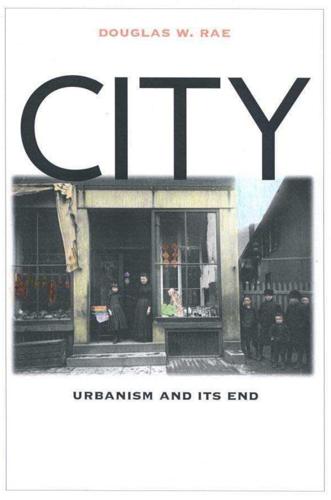
City: Urbanism and Its End
by
Douglas W. Rae
Published 15 Jan 2003
Annunziato, “Made in New Haven,” Labor Heritage 4 (Winter 1992). 65. Montgomery, “160 Years,” 23. 66. Labor Almanac, 50. CHAPTER 8. RACE, PLACE, AND THE EMERGENCE OF SPATIAL HIERARCHY 1. In general, black wages in the north ran 20 –45 percent above black southern levels, and quite commonly exceeded southern white wage levels. See, among other sources, Gunnar Myrdal, An American Dilemma (New York: Harper & Row, 1944). In appendix 6, Myrdal gives data for several industries, broken down by wage and region for the late 1930s. For example, in iron and steel working, we have the following average hourly wages for 1937: northern blacks $.74, southern blacks $.54, northern whites $.86, southern whites $.75.

The Rise of the Network Society
by
Manuel Castells
Published 31 Aug 1996
Several studies also suggest that higher skills are in demand, although not in shortage, but higher skills do not necessarily translate into higher wages.137 Thus, in the US, while decline in real wages was more pronounced for the lowest-educated, salaries for the college-educated also stagnated between 1987 and 1993.138 The direct consequence of economic restructuring in the United State s is that in the 1980s and the first half of the 1990s family income plummeted. Wages and living conditions continued to decline until 1996 in spite of a strong economic recovery in 1993.139 Furthermore, half a century after Gunnar Myrdal pointed to the “American Dilemma,” Martin Carnoy, in a powerful book, documented that racial discrimination continues to increase social inequality, contributing to marginalizing a large proportion of America’s ethnic minorities.140 However, in 1996–2000, the sustained boom led by information technology and the new economy changed the trend, and increased average real wages at about 1.2 percent per year.
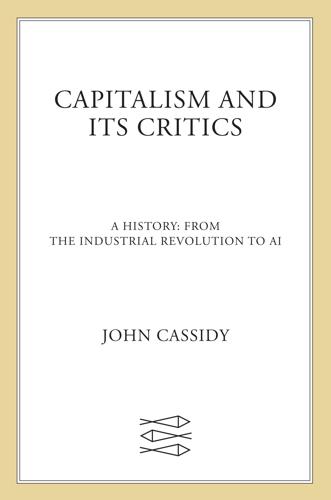
Capitalism and Its Critics: A History: From the Industrial Revolution to AI
by
John Cassidy
Published 12 May 2025
To tackle sky-high unemployment, the new government launched an ambitious program of public works, which it financed by issuing debt and running budget deficits. The political champion of this expansionist policy was the finance minister Ernst Wigforss, who had been influenced by Keynes’s 1929 pamphlet, Can Lloyd George Do It? Several young Swedish economists, particularly Gunnar Myrdal and Bertil Ohlin, also provided an intellectual justification for this policy. Indeed, they antedated Keynes in arguing that the government should balance the budget over the full economic cycle, with surpluses in the years of strong growth offsetting deficits built up during recessions.33 The Swedish medicine seemed to work.
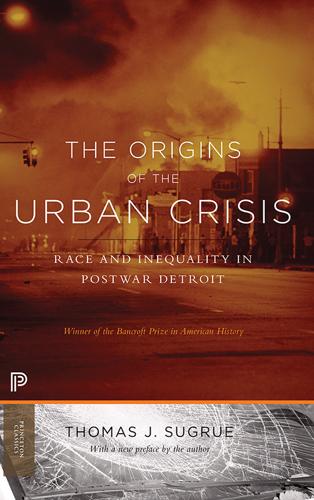
The Origins of the Urban Crisis
by
Sugrue, Thomas J.
Burnham, “The Mayor’s Friendly Relations Committee: Cultural Pluralism and the Struggle for Black Advancement,” in Race and the City: Work, Community, and Protest in Cincinnati, 1820–1970, ed. Henry Louis Taylor, Jr. (Urbana: University of Illinois Press, 1993), 258–79. The notion that integration was a solution to America’s racial “dilemma” was most forcefully articulated by Gunnar Myrdal, American Dilemma (New York: Harper, 1944). 15. Schermer, “The Transitional Housing Area,” 5–6. 16. Walter White, “How Detroit Fights Race Hatred,” Saturday Evening Post, July 18, 1953, 26–27; “Buyer Beware,” Time, April 16, 1956, 24; “Prejudice is Not Sectional,” Christian Century, April 18, 1956, 477; “A Northern City Sitting on the Lid of Racial Trouble,” U.S.

Slouching Towards Utopia: An Economic History of the Twentieth Century
by
J. Bradford Delong
Published 6 Apr 2020
Taney’s—that Black people were “so far inferior, that they had no rights which the white man was bound to respect.”13 AT THE END OF World War II, all indications were that a combination of de jure and de facto discrimination against Black Americans would continue indefinitely to prevent them from attaining education, climbing out of poverty, and building wealth. The economist and sociologist Gunnar Myrdal entitled his 1944 book on race and America An American Dilemma—the dilemma being the inconsistency between an “American creed” of equality of opportunity and the actual position of Blacks in America. There seemed to be no reason why the country could not live with this dilemma indefinitely. The Republican Party retained a vestigial commitment to Black uplift as part of its belief in “free labor.”
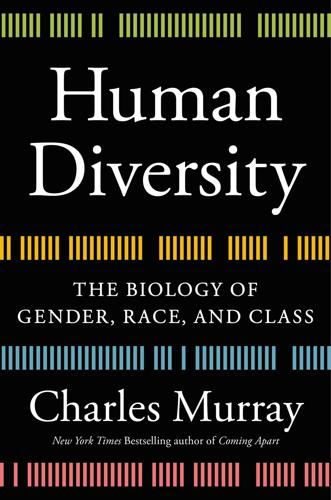
Human Diversity: The Biology of Gender, Race, and Class
by
Charles Murray
Published 28 Jan 2020
Econometrics and psychometrics were already established disciplines, but for the most part social scientists wrote narratives with simple descriptive statistics. Some of those narratives had deservedly become classics—for example, W. E. B. DuBois’s The Philadelphia Negro, Robert and Helen Lynd’s Middletown, and Gunnar Myrdal’s An American Dilemma—but social scientists were powerless to analyze causation or make predictions in quantitative ways except with small samples in psychology laboratories working with rats and pigeons. The multivariate statistical techniques for dealing with larger and messier problems of human society had been invented, but the computational burdens were too great.

Bourgeois Dignity: Why Economics Can't Explain the Modern World
by
Deirdre N. McCloskey
Published 15 Nov 2011
Samuelsonian thought describes modern economists of the so-called mainstream—modeling exclusively with “constrained maximization,” in which the only virtue acknowledged is prudence.9 Not every worthy economist is Samuelsonian. An embattled countersquad of economic thinkers, with quite varied politics, has in the twentieth century included Joseph Schumpeter, Ludwig von Mises, Friedrich Hayek, Thorstein Veblen, John R. Commons, John Maynard Keynes, John H. Clapham, Frank Knight, Eli Heckscher, Gunnar Myrdal, Antonio Gramsci, Luigi Einaudi, Joan Robinson, Kenneth Boulding, Ronald Coase, Paul Sweezy, Alexander Gerschenkron, John Kenneth Galbraith, George Shackle, Robert Heilbroner, Theodore Schultz, Albert Hirschman, Bert Hoselitz, Bruno Leoni, Noel Butlin, James Buchanan, Thomas Schelling, Robert Fogel, Amartya Sen, Elinor Ostrom, Israel Kirzner, and Vernon Smith.
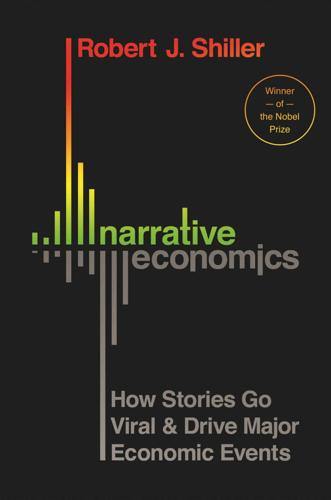
Narrative Economics: How Stories Go Viral and Drive Major Economic Events
by
Robert J. Shiller
Published 14 Oct 2019
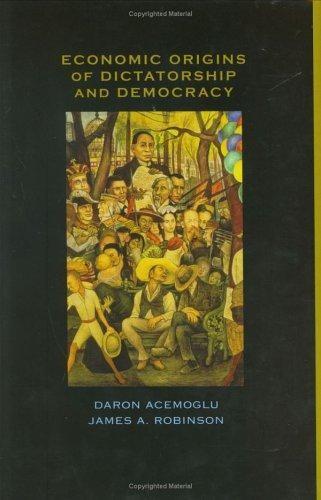
Economic Origins of Dictatorship and Democracy
by
Daron Acemoğlu
and
James A. Robinson
Published 28 Sep 2001